Impact of COVID-19


Pandemic on California
Veterinary Practices


Page 14 Volume 74 Number 05 • September–October 2020
The Publication of the California Veterinary Medical Association
Veterinarian California
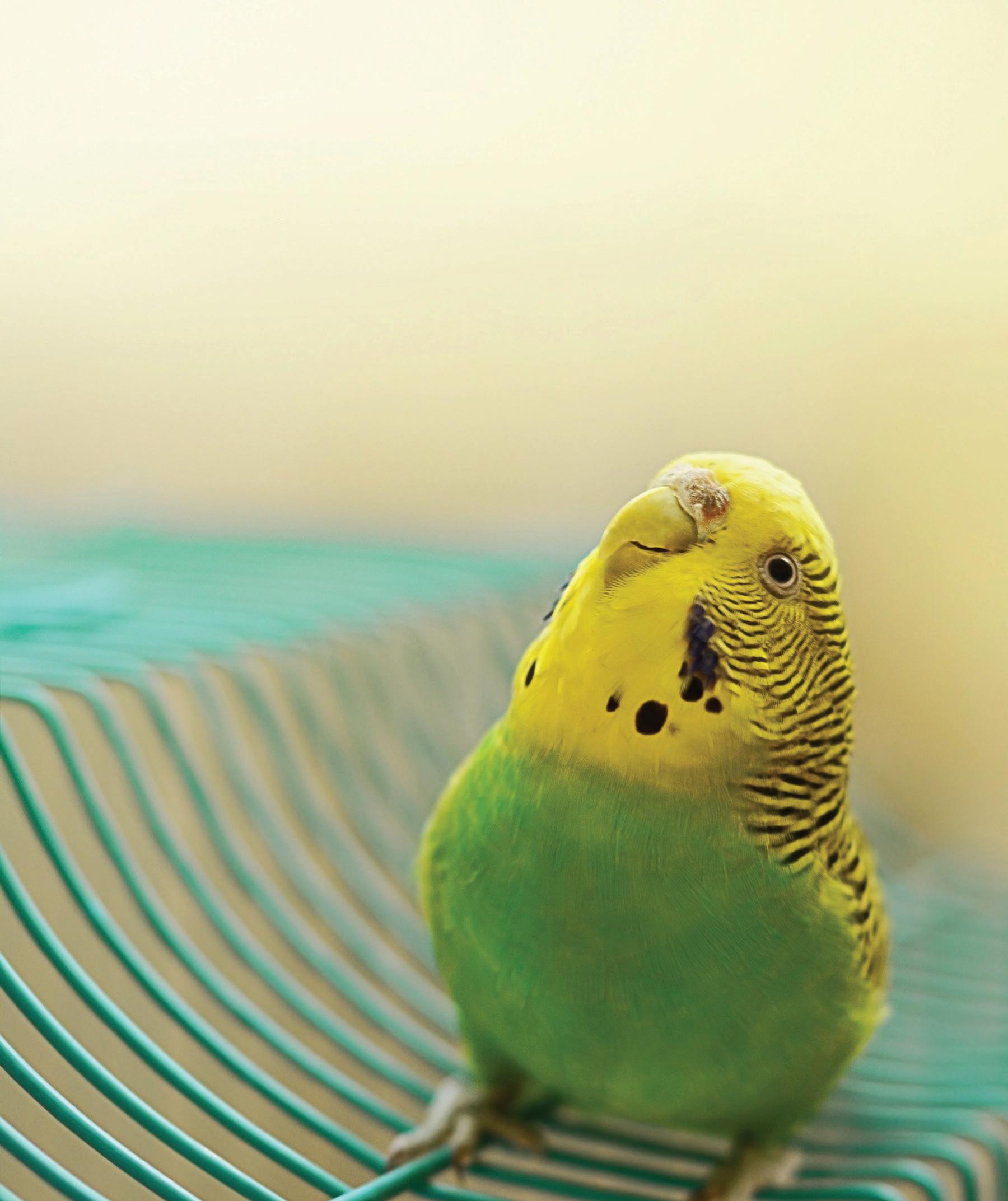
If you had a beak, we’d make it chirp. Preferred Employers Insurance, a Berkley company, offers CVMA members industry-specific workers’ compensation insurance at discounted rates. Contact us to learn more about the everyday stability and value we supply to practices all over California. Visit bit.ly/CVMAmembers or email marketing@peiwc.com .
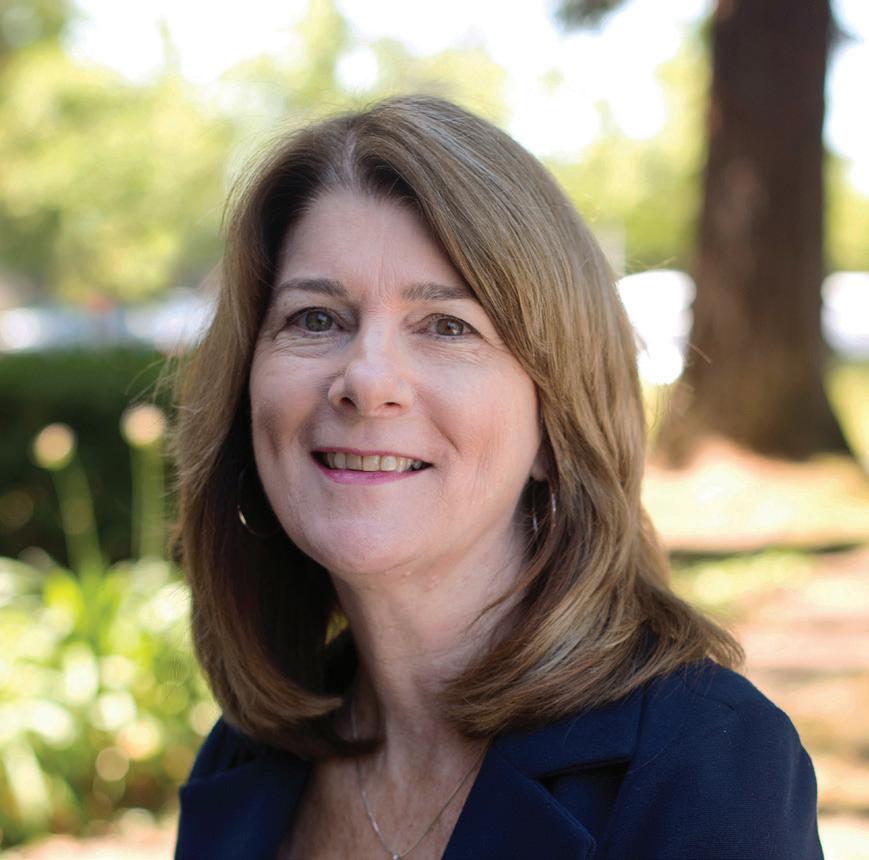

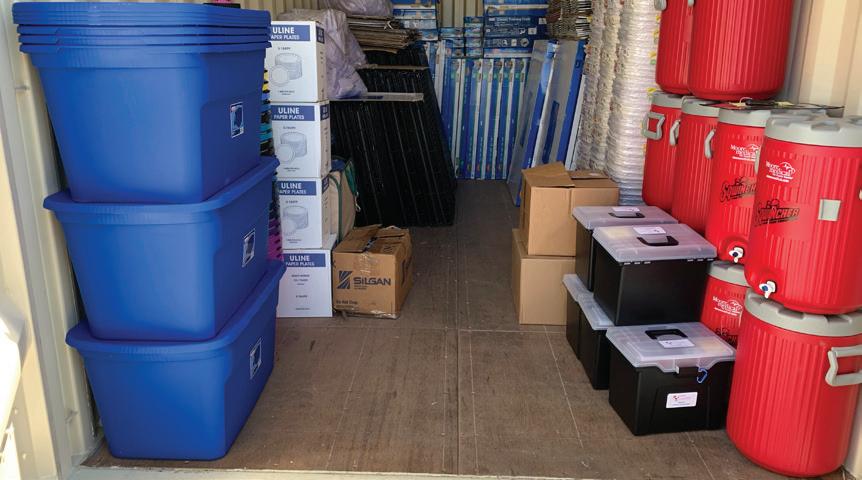
12 CVMA Online Seminars 17 CVMA Fall Seminar To-Go 22 CAVMRC Online Training 3 UpcomingCE “Pursuing Excellence in the Veterinary Profession” 2020 Legislation 23 10 24 CVMA Completes $1M Animal Disaster Grant A Fond Farewell 4 CE Calendar 5 As I See It 6 First-Year Veterinarian 7 News & Now 26 Compliance Corner 39 Student News 40 WesternU News 41 UC Davis News 42 Classifieds 46 Ad Index 46 CVMA Remembers Contents Features Departments Volume 74 Number 05 | September–October 2020 Inside This Issue 8 Donate to the California Veterinary Medical Foundation 9 Member Profile: Dr. Kristina Netherwood 10 2020 Legislation 12 California Legal Requirement to Provide Sexual Harassment Training 13 Wellness in a Pandemic 14 Impact of COVID-19 Pandemic 18 CNA - New Carrier for VISC 19 Employee Injury Investigations – What is the Purpose? 20 SARS-CoV-2 Testing in Animals 21 New Euthanasia Requirements Take E ect in California 22 The CVMA’s Commitment to Animals in Disasters 23 CVMA Completes $1M Animal Disaster Grant 24 A Fond Farewell 25 Taking the Helm 28 Regulatory Compliance Products for Veterinary Practices 31 Support the Power of the PAC 32 The 2020 CVMA Awards – Call for Nominations! 33 Meet a New CVMA CVA 34 The Two Paths to Medicare 36 Veterinary Medical Board Update 37 Creating a Thriving Dentistry Department
Veterinarian California
Volume
Upcoming CE Events
The Publication of the California Veterinary Medical Association
Publisher Valerie Fenstermaker
Managing Editor Kristen Calderon
Editor Trisha Consunji
Publication Designer Howard Steffens
Classified Advertising
Board of Governors
President
Fall Seminar To-Go! Live Interactive Online
Learning, October 9–11, 2020
The Online CVMA Fall Seminar has something for everyone. Our DVM track o ers up to 12 CEUs and includes sessions on radiology and dermatology. Our technician track o ers 8 CEUs and features pain management and anesthesia. See page 17 for more information.
CAVMRC Training Online
November 8, 2020
CE 2 GO!
Receive detailed information on emergency/critical care topics that can be used in your everyday practice as well as during a disaster response and earn 6.5 CEUs. For more information, see page 22.
ONLINE SEMINARS
Earn CE with the CVMA Online Seminars
Below are our upcoming online seminar topics. Please refer to page 12 for details.
Sexual Harassment Education and Training
October 13 & 21
Livestock Antimicrobial Stewardship*
November 4
Judicious Use of Medically Important Antimicrobial Drugs (Small Animal)*
November 18
*Course satisfies the one hour of California CE requirements on the judicious use of medically important antimicrobial drugs.
Registration for all CVMA events can be made online by logging onto cvma.net or by calling 800.655.2862.
California Veterinarian (ISSN 00081612) is published bi-monthly by the California Veterinary Medical Association, e-mail: sta @cvma.net. California Veterinarian is an o cial publication of the California Veterinary Medical Association. Annual subscription rates to non-members: $50 U.S., $60 Canada/Mexico, $70 overseas. Price per single copy: $10 current year, $12 back issues. Periodicals postage paid at Sacramento, CA and at additional mailing o ces. POSTMASTER: Send address changes to California Veterinarian, 1400 River Park Dr., Suite 100, Sacramento, CA 95815-4505. Phone: 800.655.2862
The CVMA and California Veterinarian assume no responsibility for material contained in articles and advertisements published, nor does publication necessarily constitute endorsement by them. ©2020 CVMA
Laura Phillips
Dr. Dirk Yelinek
President Elect Dr. Elisabeth Klapstein
Member-at-Large Dr. Keith Rode
Members
Dr. Peter Bowie
Dr. Patrick Connolly
Dr. Larry Correia
Dr. Jennifer Hawkins
Dr. Michael Karle
Dr. Adam Lauppe
Dr. Julia Lewis
Dr. Bruce Lindsey
Dr. Teresa Morishita
Dr. Marshall Scott
Dr. Dianne Sequoia
Dr. Peter Vogel
Student Representatives
University of California, Davis Megan Dietz
Western University
Christopher Morrill
Treasurer Dr. George Bishop
Chair, House of Delegates Dr. Brent Wooden
CVMA Staff
Executive Director Valerie Fenstermaker
Assistant Executive Director Della Yee
Director of Communications Kristen Calderon
Director of Finance Kathy Van Booven
Director of Regulatory Affairs Dr. Grant Miller
Design and Marketing Manager Howard Steffens
Membership and Student Services Laura Phillips
Manager
Publications Manager Trisha Consunji
Accountant Bernice Evans
Executive Assistant Georgia Ashley
Communications Coordinator Nicole Heath
Finance Coordinator Sharmele Browne
Meetings and Events Coordinator Lily Briggs
Membership and CE Coordinator Jennifer Smith
Receptionist Mary Young
Display Advertising
Please contact Trisha Consunji at 916.649.0599 or tconsunji@cvma.net.
Tell us what you think!
Want to comment on what the CVMA is doing or writing about? Send an email to comments@cvma.net or call 800.655.2862. Your thoughts and opinions matter to us. The CVMA is YOUR association! The CVMA is 7,800 voices strong. Let us hear your voice!
California Veterinarian • September–October 2020 cvma.net 4
For the timeliest CE information, visit Learning at cvma.net. 74 Number 05 • September–October 2020
All CVMA CE offerings are live and interactive, and count towards your required participatory instruction. Pre-recorded online CE offered elsewhere only counts towards self-study even if it offers the ability to ask questions afterwards. For more information on CE requirements, visit the Learning tab at cvma.net.
Continuing Education Calendar
As I See It
Last October I made the decision to retire from the CVMA in 2020. The timing was right. I’ve worked at the CVMA for over 30 years with the last 16 as your executive director. It’s been a fulfilling, challenging, and enriching position and I have felt so fortunate to truly love my job. But, I knew it was time for me to spend more time with my family and slow life down a bit.
I notified the Board of Governors and we embarked on a search for a new executive director. I couldn’t have imagined that the beginning of that process would coincide with COVID-19 and shutting down our o ce. Our search committee moved forward, however, and we worked with a search firm over a three-month period to find just the right person to become the new CVMA executive director. I am pleased to say that we accomplished that with the hiring of your new executive director, Dan Baxter. I’ve known Dan for 20 years as our legal counsel and I couldn’t be more pleased that Dan will take over this position.
I’m really proud of all that the CVMA has accomplished during my time as executive director. All of it has been a team e ort—it’s not a one-person job. During my tenure, our amazing leadership had the foresight to invest in the CVMA’s future with a new conference (PacVet) and start our own insurance brokerage (VISC). We started our CVMA InLine safety program, our legal services member benefit, and the California Veterinary Medical Reserve Corps. We have sponsored legislation to ensure that local communities can’t control the practice of veterinary medicine and supported and opposed bills that a ect veterinary medicine. Numerous other benefits and services for CVMA members have been established.

Those leaders include CVMA past presidents and board members, our treasurer, house chairs, delegates, and student representatives. They include CVMA committee chairs, committee members, and our dedicated lobbyists that I’ve worked with on many challenging legislative issues. Our veterinary school deans, national, state and local association leaders, and heads of state regulatory agencies have been important resources along the way. I truly appreciate all of their support.
Our CVMA members are the best. I’ve met so many of you throughout this journey and appreciate the support and respect you have given me and the opportunity to connect with you over the years. My goal has always been to represent our members, the veterinary profession, and to advocate for quality veterinary medical care for animals through the CVMA.
I am truly grateful for the commitment and dedication of the CVMA sta from both the present and the past. They have turned all of the ideas and goals into successes. We have worked as a team and accomplished much together.
I will miss a lot about the CVMA but mostly I will miss the many friends that I’ve made. You have made me laugh, talked me through hard times, shared meals and great conversations, and created a circle of support for which I am truly grateful. You are all very special and I feel very fortunate to know you.
The CVMA is a strong and respected association and it’s been an honor to serve as its executive director.
Valerie Fenstermaker
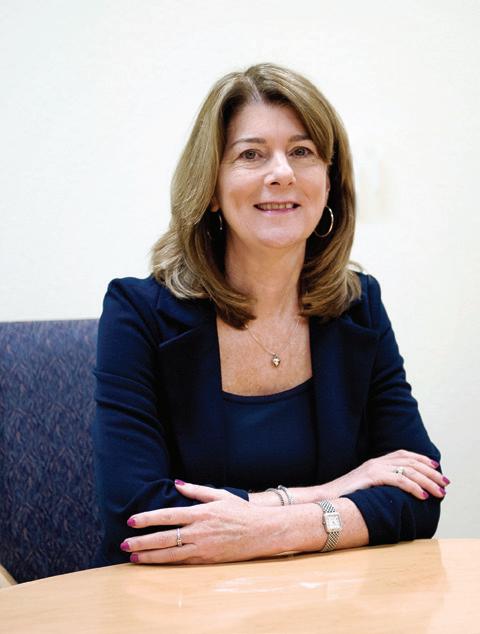
CVMA Executive
Director
5 View this issue of the California Veterinarian online at cvma.net/publications.
The Start of Real Learning
Laura Weintraub, DVM By
Ihad heard it countless times before: “After graduation is when the real learning begins.” While I believed those veterinarians, I could not imagine that life after veterinary school would actually be harder than the four years I had just endured. I can confirm that the learning curve continues onwards in a steep trajectory that dwarfs K2.
There is a gigantic leap between being a student and being the primary veterinarian on a case. In school, if I didn’t do the work correctly, I was the only one who su ered the consequences of just merely earning a lower grade. In the real world, my patients have to endure my learning process. Furthermore, veterinary school is all about the cold hard facts. Everything that is taught and practiced is evidence-based medicine. This mentality gave me a false impression that everything in veterinary medicine is clear-cut. In reality, being a veterinarian is just as much of an art as it is a science. There are just some things with no great textbook answers, like when should my next recheck be on a lame pig or what drug do I use now that the one I wanted is on backorder?
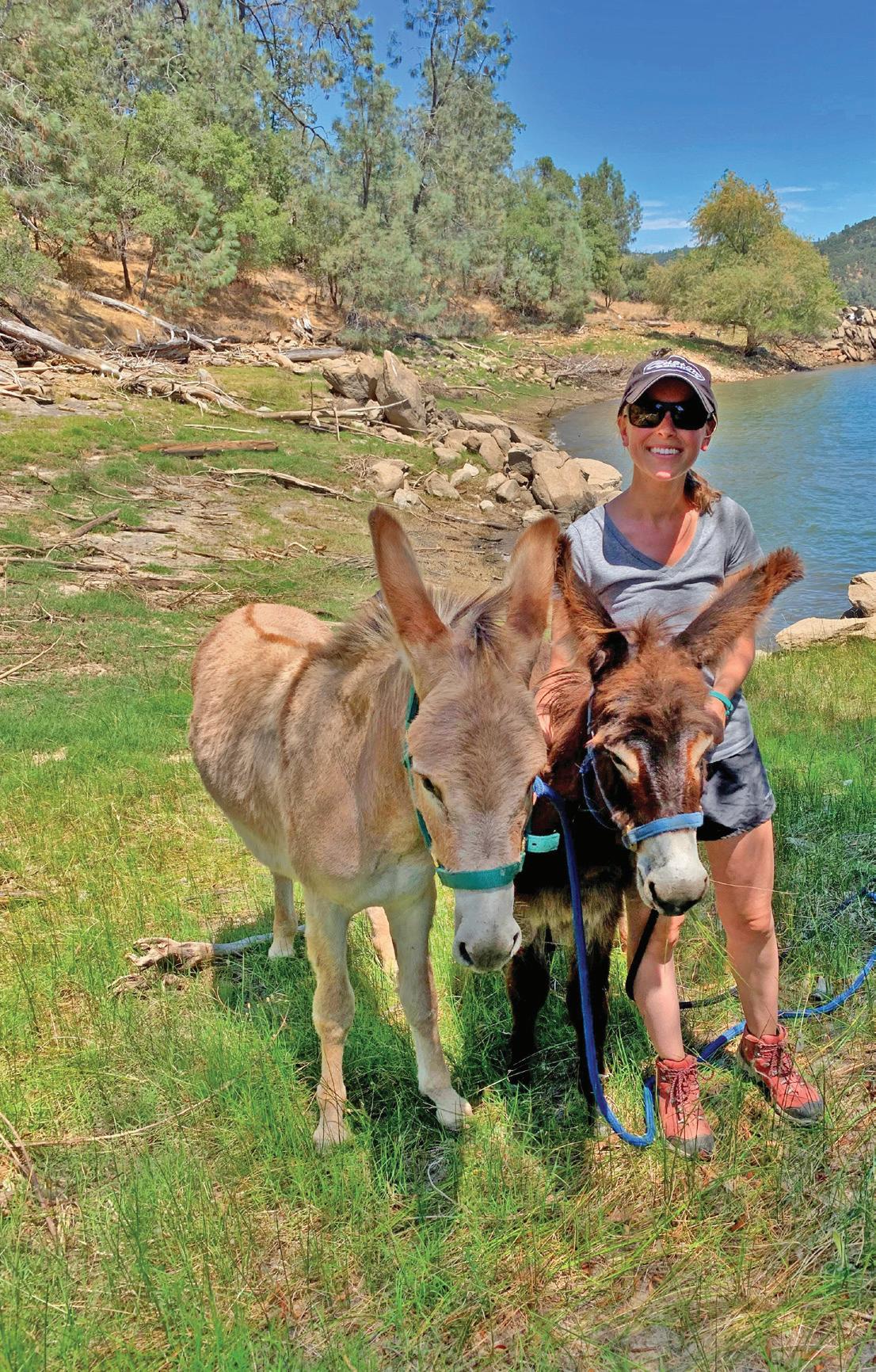
Then there is the client communication component. To their credit, UC Davis did spend a considerable amount of time teaching us how to handle all di erent types of clients. However, experiencing it first-hand makes it a much di erent beast. Again, I frequently find myself stumped when owners ask what appear to be very simple questions. Unfortunately, I do not know how long a sheep can live with a fever of 106.5 degrees. For the record, I have not found this one in the textbooks or my notes either. Then, I find myself up late at night trying to hunt down answers to questions like this one. And to think I believed that after graduation I would have to study less!
As I wade through the waters of life after graduation, imposter syndrome does occasionally rear its ugly head. We have all heard about it and many of us may have lived it in school as well. Thankfully, I have people in my corner to remind me that we are exactly where we are supposed to be. There is no fast forward button on clinical experience—even though many of us wish there was.
Before I graduated, I considered myself very lucky to have an exceptional set of classmates to call friends. Now I understand that friends are essential to stay sane in this profession. We are leaning on each other now more than ever before. I am also incredibly fortunate to have a great group of coworkers that help me laugh during the hard times and revel in the joys of success. I am also equally grateful to have three fantastic mentors that for some reason thought it would be a great idea to help a budding veterinarian. It takes a village to train a veterinarian but it takes an even bigger village to maintain one.
First-Year Veterinarian California Veterinarian • September–October 2020 cvma.net 6
September is National Preparedness Month – Be Prepared by Registering for the CAVMRC Fall Training National Preparedness Month encourages people to prepare for emergencies in their homes, businesses, schools, and communities. With California already in an unusually active fire season, it is more important now than ever for everyone, including veterinary professionals, to be prepared. The California Veterinary Medical Reserve Corps (CAVMRC) is providing live training, "Animals in Disasters – Common Medical Conditions", on November 8. See page 22 for more information.
World Rabies Day is September 28, 2020

Now in its 14th year, World Rabies Day is the first and only global day of action and awareness for rabies prevention. The theme for this year’s World Rabies Day focuses on vaccination and collaboration. Visit rabiesalliance.org/world-rabies-day/ for more information or to schedule your own World Rabies Day activities.
Thank You RVTs!

National Veterinary Technician Week honors the commitment and role of veterinary technicians. This week has been an annual tradition since 1993 and this year will occur the week of October 11 to 17. The National Association of Veterinary Technicians in America is o ering a media kit with a variety of activities. Visit navta.net/ page/nat_vet_tech for more information.
Upcoming Meetings
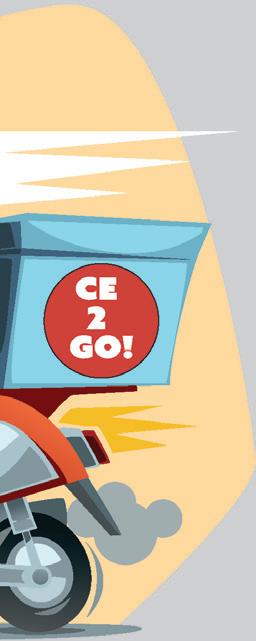

News Now@CVMA & 7 View this issue of the California Veterinarian online at cvma.net/publications. Board of Governors Meeting @CVMA Board of Governors Vision Planning @CVMA CVMA Fall Seminar @Virtuallearning CAVMRC Fall Training @VirtualLearning OCT 9 OCT 10 NOV 8 OCT 10
Donate to the California Veterinary Medical Foundation and Make a Difference
The California Veterinary Medical Foundation (CVMF) provides help for animals, especially during disasters, promotes education through scholarships, and celebrates the human-animal bond. As the non-profit, charitable arm of the CVMA, the CVMF is completely funded by donations and relies on your support. Your donation will allow the CVMF to continue the following e orts:
Disaster Preparedness and Response
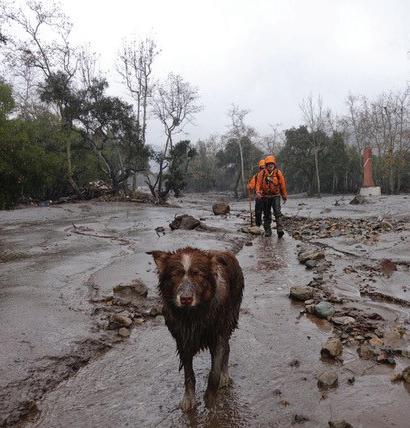
Extreme temperatures and dry conditions have created major wildfires in the state to date. These fires have destroyed thousands of acres of property, upending families, businesses, and wildlife, and resulted in countless animals, both wild and domestic, requiring medical care. The CVMF supports the California Veterinary Medical Reserve Corps (CAVMRC) that provides medical assistance to animals during a declared emergency. The CAVMRC remains at the ready for current and future fires, and other disasters. The CVMF also maintains a fund to reimburse private practitioners who provide subsidized or no-cost veterinary care to the public during a disaster.
Scholarships for UC Davis and WesternU Students
Each year, the CVMF presents monetary awards to third and fourth-year veterinary students at both UC Davis and WesternU veterinary schools for their role in leadership, the human-animal bond, and to those who show outstanding service in veterinary medicine at a city or county animal shelter, or during a recognized California disaster response.
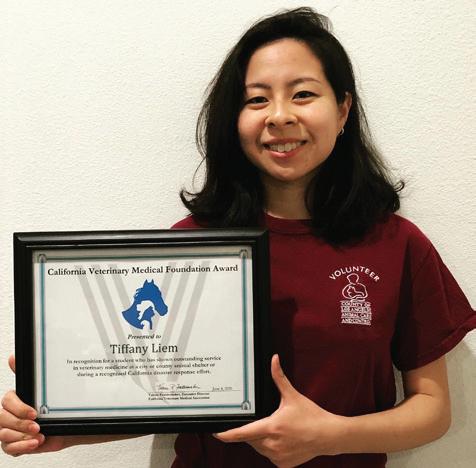
Donations to the CVMA’s Animal Hall of Fame Winners
The CVMA Hall of Fame Award celebrates the companion and working animals of California and the veterinarians who care for them. Past inductees have included working, service, and therapy animals, and heroic animals who have exemplified the human-animal bond.
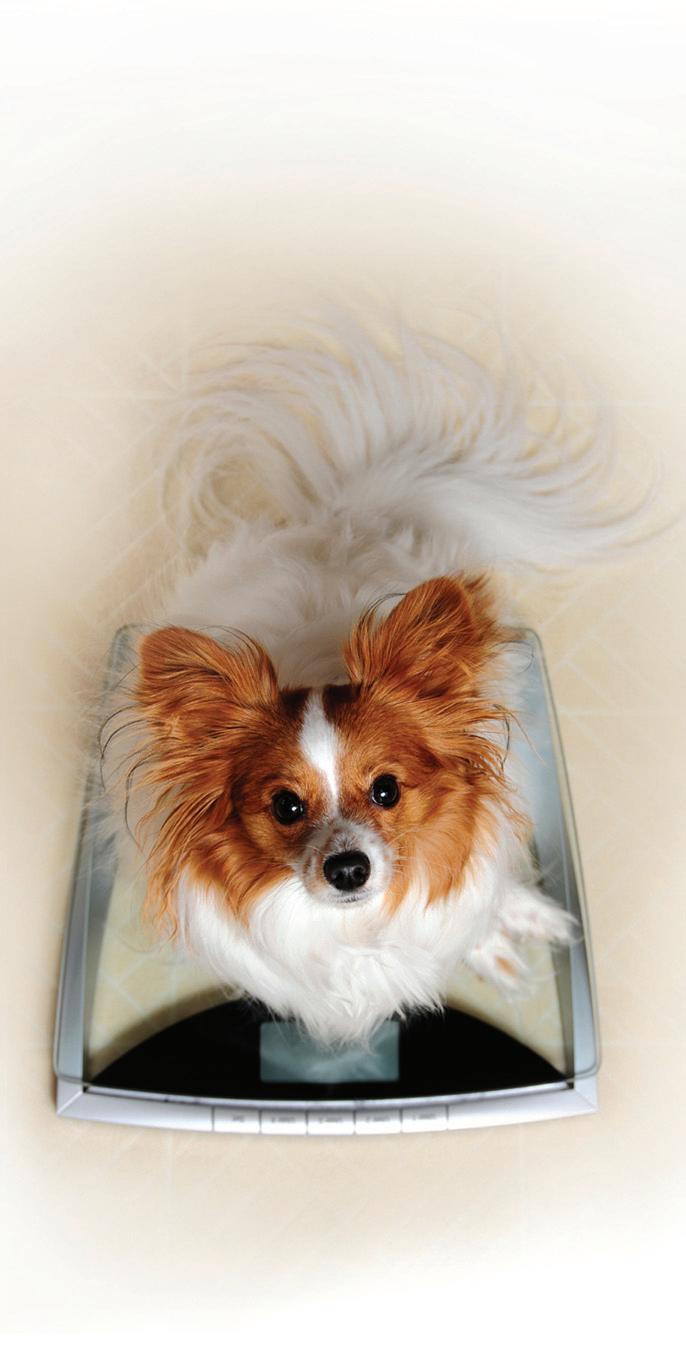
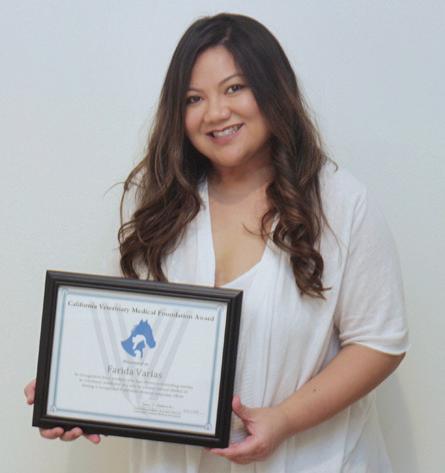
Please consider giving to the CVMF. Give back to the veterinary community and receive a tax deduction. You may donate at cvmf.net or call Bernice Evans at 800.655.2862.
Weigh Your Options with an Accurate Valuation
Why choose Gatto McFerson to conduct your practice valuation?
• We have valued over 315 veterinary practices and clinics
• We have the tax expertise you need when buying or selling
• We are Accredited in Business Valuations, a certification that only CPAs can hold
• We are an independent adviser with no financial stake in the transaction
We are experts in all aspects of:
• Buying and selling a veterinary practice or clinic
• Facilitating associate buy-ins
• Preparing an exit strategy
• Creating an estate plan
• Increasing the value of your practice
To maximize value and minimize taxes, contact:
Lou Gatto, CPA lou@gattomcferson.com
Tom McFerson, CPA, ABV tom@gattomcferson.com
California Veterinarian • May–June 2018 cvma.net 8 California Veterinarian • September–October 2020 cvma.net
528 Arizona Ave. Suite 201 Santa Monica, CA 90401 Ph: 310-393-2434 Fax: 310-393-8777 www.gattomcferson.com
CVMF Award recipient, Ti any Liem from UC Davis
CVMF Award recipient, Farida Varias from WesternU.
California Animal Hall of Fame 2019 inductee, MacGyver.
I AM THE CVMA


Kristina Netherwood, DVM
• Head veterinarian for Elevation Animal Rescue (non-profit)





• Practice type: High volume spay/neuter mobile clinic and relief veterinarian
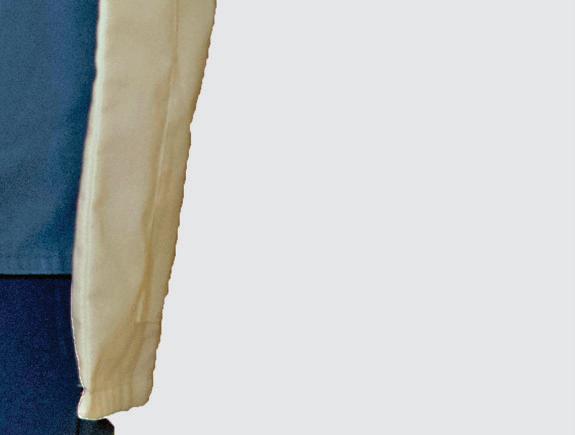



• UC Davis School of Veterinary Medicine
Why are you a CVMA member?
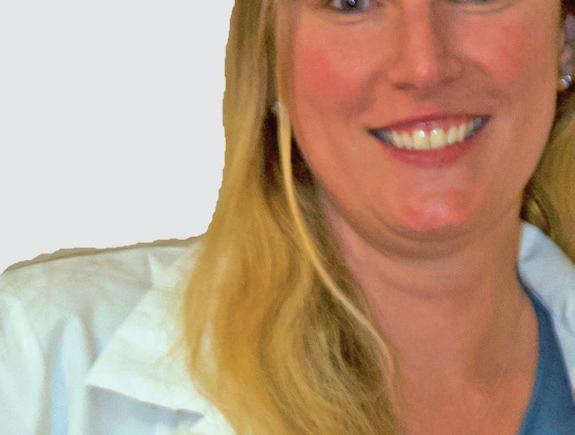
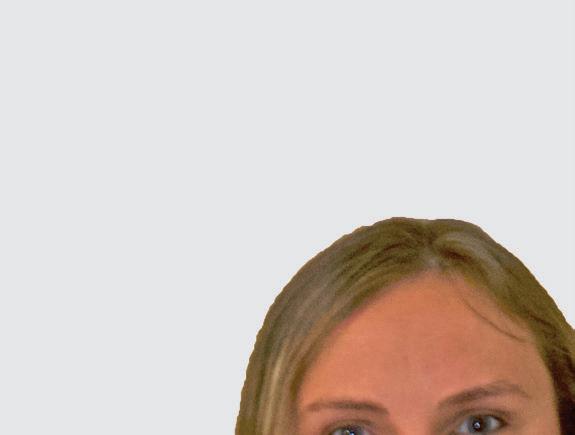
I know the CVMA legislative team is involved in current legislation and bringing my voice as well as other veterinarians’ voices to help them be heard. I also hope to continue participating in the CVMA’s continuing education programs.
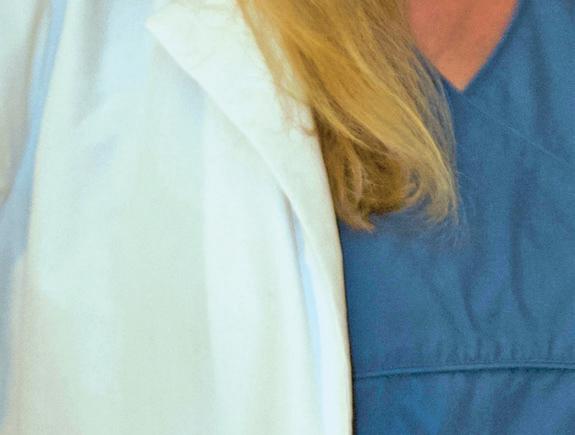
What is your best advice for practicing during COVID-19?
What was your rst job?
My first real job was at a small familyowned take and bake pizza place.
Continue to work hard at having a work-life balance and always wear a mask. Think about the client’s perspective during this time and how di erent it must be for them, too.
Any unusual hobby or interest?
Members are the heart of the CVMA
In my free time, I like to hike mountains, backpack, cook and bake, and spend time with my two cats Simon and Flash. I just recently backpacked the “Lost Coast” in Northern CA above Fort Bragg.
I think I was born to spay cats. I’m really good at it. My average time is about five to eight minutes per cat. I do actually enjoy it.
What is your most embarrassing moment?
What would you be if you weren’t in the veterinary profession?
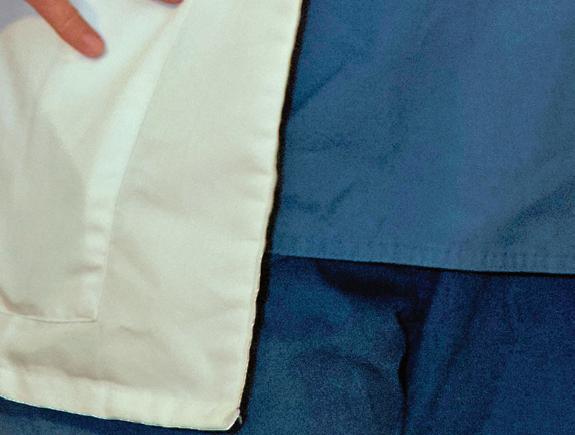
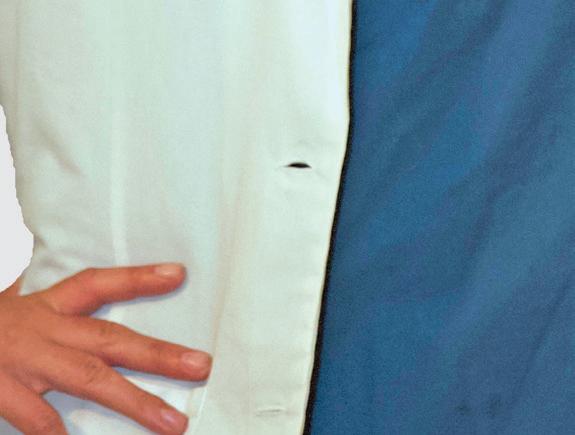
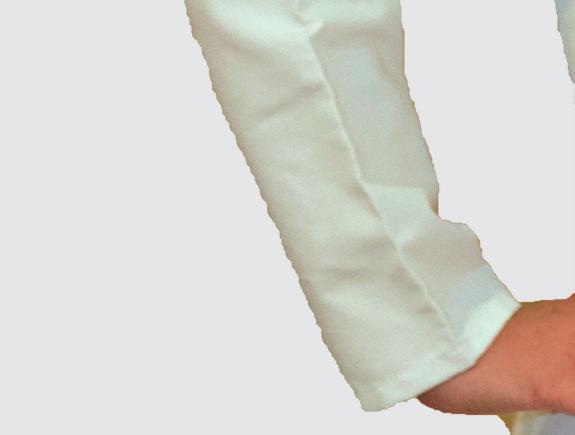
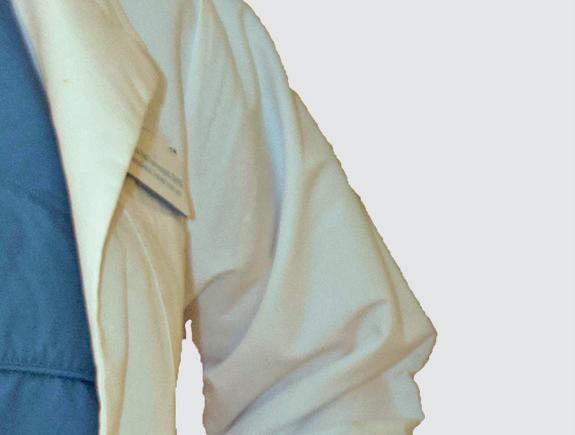
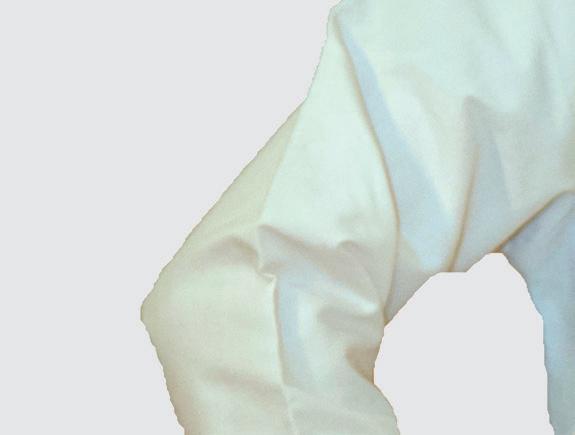
I accidentally sent a sympathy card to a family whose dog had not passed. They appreciated my kind message but let me know that the card had been sent to the wrong family.
A chemistry teacher. I’ve always loved chemistry and it has continued to be useful to me in the daily math that I do in my current profession.
9 View this issue of the California Veterinarian online at cvma.net/publications.
2020 LEGISLATION
The CVMA continues to actively represent the veterinary profession on legislative bills that a ect California’s animals and the practice of veterinary medicine. This year, California legislators are carrying a reduced number of bills due to the impact of COVID-19. The CVMA legislative team has participated in numerous calls and virtual meetings with legislative sta and stakeholders and has submitted position letters on bills of high importance. Below is a summary of the most important bills that the CVMA has worked on this year.
SB 1347 (Galgiani) Veterinary Medicine: License exemptions: limited veterinary services premises registration. Amended 8.12.20
CVMA POSITION: Neutral
SB 1347 (Galgiani) would have created an exemption to premises permit registration with the Veterinary Medical Board (VMB) for certain qualifying animal shelters that practice veterinary medicine. It also would have circumvented the veterinarian licensee manager requirement.
The CVMA initially opposed this bill due to the lack of minimum standards, VMB oversight, and veterinarian supervision—all critical for both animal and consumer protection at shelters. The CVMA rallied its members with an action alert asking for letters that would educate legislators on the critical importance
of veterinarian supervision on the medical treatment of animals in shelters. The CVMA o ered amendments that would allow shelters to perform limited specified veterinary tasks, to register with the VMB naming the shelter director as the licensee manager, and to have a veterinarian of record with limited liability overseeing the veterinary program. These amendments were ultimately put forward by the policy committee chair, Assemblyman Evan Low, during the August 10 hearing on the bill in the Assembly Business and Professions Committee. The Committee adopted the CVMA’s amendments and moved the bill forward to the Assembly Appropriations Committee. The CVMA changed its position from oppose to neutral. When the bill reached the Appropriations Committee, the author and sponsors felt these amendments were not acceptable and they dropped the bill.
STATUS: SB 1347 was pulled from the Assembly Appropriations Committee calendar by Senator Galgiani and her sponsors on August 18 rendering the bill dead for the year.

SB 627 (Galgiani) Cannabis and cannabis products: medicinal use on an animal: veterinary medicine
CVMA POSITION: Support
Current law permits veterinarians to discuss the use of medicinal cannabis for animal patients with clients but prohibits cannabis recommendation. This two-year bill
10 California Veterinarian • September–October 2020 cvma.net
(carried over by the author from last year) would have permitted veterinarians to recommend medicinal cannabis and cannabis products for an animal patient “for any condition for which cannabis or cannabis products provide relief” and within the veterinarian-client-patient relationship. The CVMA worked extensively with the author and the Assembly Business and Professions Committee last year to amend this bill substantively to address the needs of the veterinary profession and animals. With those amendments, the bill passed out of the policy committee and was sent to the Assembly Appropriations Committee, where it was ultimately “held” due to fiscal concerns.
STATUS: SB 627 was held in the Assembly Appropriations Committee, rendering it dead for the year.
SB 800 (Dodd) Horse racing: veterinary medical records: race horse fatalities: equine medication
CVMA POSITION: Watch, work with author
In its original version, this bill would have required a veterinarian to produce an entire medical record to any person directly involved in the care of a horse “that has participated in or is intended to participate in a licensed horse race.” Current law requires veterinarians to provide a copy of a medical record to the animal owner within five days of a request. As written, the bill was vague because it implied that for the life of the horse, a veterinarian must produce records for anyone involved in its care, and to any government agency that requested it.
The CVMA worked with the author and the policy committee consultants and the bill was amended to clarify that the requirement applies only to horses during the racing portion of their lives and that records would have to be provided only to those involved with the medical care of the horse.
STATUS: SB 800 is awaiting the Governor’s signature.
AB 2855 (Low, et al) Committee on B&P. Veterinary Medical Board




The Assembly Business and Professions Committee and the Senate Business, Professions and Economic Development Committee periodically hold joint sunset oversight hearings to review boards under the Department of Consumer A airs (DCA). The sunset review process provides an opportunity for the DCA, the Legislature, the boards, and interested parties and stakeholders to discuss the performance of the boards, and make recommendations for improvements. The VMB was scheduled for review in 2020 and the Sunset Review Report was posted on the VMB website. The CVMA submitted a letter to the Sunset Review Committee in March with comments on issues addressed by the VMB in their report.
STATUS: AB 2855 did not move forward due to an inability for the Legislature to conduct sunset review hearings this year due to COVID-19. A new bill was introduced, SB 1474, which serves as the sunset extension bill for numerous boards that were supposed to be considered this year under Sunset Review, including the VMB. This will give the two policy committees time to review the VMB and others in March 2021, during Sunset hearings. The VMB will be automatically extended in statute for one year until January 1, 2022
SB 1115 (Wilk) and AB 1953 (Bloom) Animal Blood Bank Bills
CVMA POSITION: Oppose both bills, unless amended.
Two bills were introduced this year that would phase out the two closed-colony blood banks in California and replace them with establishments that collect blood from community-sourced animals. This raised issues of concern on both the safety and availability of the animal blood supply in California.
STATUS: AB 1953 (Bloom) was withdrawn by its author and SB 1115 (Wilk) was held in the Assembly Agriculture Committee. Neither bill will move forward this year.
For specific information on bills or to track CVMA-monitored bills through the legislative process, visit the CVMA online Legislative Action Center, which now has a new look and format. The Voter Voice platform makes searching for relevant legislation easier and is now more user-friendly. Check out the improved format by logging into cvma.net and clicking on the Government tab.
CVMA Legal Services Benefit
This benefit entitles CVMA member veterinarians up to one-half hour of telephone and research work per month with an attorney from Wilke Fleury, LLP.
Services offered:
• Business tax issues
• Business owner succession planning

• Cal/OSHA issues
• Contract issues
• Employment law



• Licensure issues
• Practice ownership and organizational structure
• Regulatory and administrative law

• Veterinary Medical Board enforcement issues
Services not included:
• Criminal law
• Domestic relations
1) Call Wilke Fleury at 916.441.2430
2) Enter extension number 3336 for Steve Marmaduke or 3416 for Samson Elsbernd, or simply leave a voice mail in the general mailbox and your call will be routed accordingly.
3) Provide your CVMA member ID
This program generously sponsored by
11 View this issue of the California Veterinarian online at cvma.net/publications.
California Legal Requirement to Provide Sexual Harassment Training
SB 1343 (Mitchell), enacted in 2019, established a workplace sexual harassment training requirement in California. By January 1, 2021, employers with five or more employees must have all employees complete a sexual harassment prevention training course.
All supervisory employees must complete at least two hours of specified training, and all non-supervisory employees must complete at least one hour of specified training.
The training must be taught by a qualified instructor and cover specific topics such as harassment based on gender identity, gender expression, and sexual orientation.
Following the initial training, employees must retrain at least every two years.*
The CVMA o ers webinars that meet state requirements for the mandatory sexual harassment training. Visit cvma.net and click on the CVMA Learning Programs under the Learning tab to check for upcoming trainings. Registration may be for an individual or a group and CVMA members will receive a discounted rate. Course completion certificates are given to all registered attendees following the training. More information about California’s employee sexual harassment training requirement may be found at cvma-inline.net in the Legal section under Employment Law.
*Newly hired employees must receive training within six months of hire. Similarly, if an existing employee received training as a non-supervisor and is promoted to a supervisor position, he/ she must be trained as a supervisor within six months of assuming the supervisory position. In both cases, if the employer is using training year tracking, the employees would need to be trained again in the employer’s next group training even though it occurs sooner than two years. For example, if the employer trained employees in 2020 and sets 2022 as the next training year, the new employee/new supervisor who is trained in 2021 would be included in the 2022 training to get the employee on the same schedule as everyone else.
CVMA Online Seminars
CE You Need, When You Want It, and Where You Want It!
CVMA Online Seminars are a convenient way to get your CE where you want it and when you want it. Most interactive webinars are o ered on two di erent dates and times to fi t your busy schedule and can be viewed wherever you have a high-speed internet connection.

Register for these online seminars by visiting the Learning tab at cvma.net. The following courses meet California state law requirements.
Sexual
October 13, 2020
12:00 PM–1:00 PM Non-supervisors (1 CEU) 12:00 PM–2:15 PM Supervisors (2 CEUs)
October 21, 2020
5:00 PM–6:00 PM Non-supervisors (1 CEU) 5:00 PM–7:15 PM Supervisors (2 CEUs)
Employers with five or more employees must provide sexual harassment education and training for all employees by January 1, 2021. This webinar will meet the requirement for one hour of training for non-supervisor employees and two hours of training for supervisors.
Livestock Antimicrobial Stewardship | Marissa Silva, MVB
November 4, 2020
3:00 PM–4:15 PM (1.5 CEUs)
The CDFA’s Antimicrobial Use and Stewardship team will cover concepts veterinarians should consider for the judicious use of antimicrobials in livestock. This presentation features stewardship best management practices, research-based resources for proper use of medically important antimicrobial drugs, and fulfills the continuing education antimicrobial stewardship requirement for California license renewal.
Judicious Use of Medically Important Antimicrobial Drugs | Krystle
November 18, 2020
12:30 PM–1:45 PM (1.5 CEUs)
Reagan, DVM
This course will provide an overview of antimicrobial resistance and address mechanisms for both reducing and improving antimicrobial use in your practice. This course satisfies the one hour of California CE requirement for veterinarians on the judicious use of medically important antimicrobial drugs. This webinar is geared for small animal practitioners.
For more information and to register for these online seminars, visit the Learning tab at cvma.net or call 800.655.2862.
Harassment
and
Education
Training | Samson Elsbernd, Esq. | Wilke Fleury LLP
12 California Veterinarian • September–October 2020 cvma.net
Wellness in a Pandemic
by Carrie Jurney, DVM, DACVIM (Neuro), CCFP By
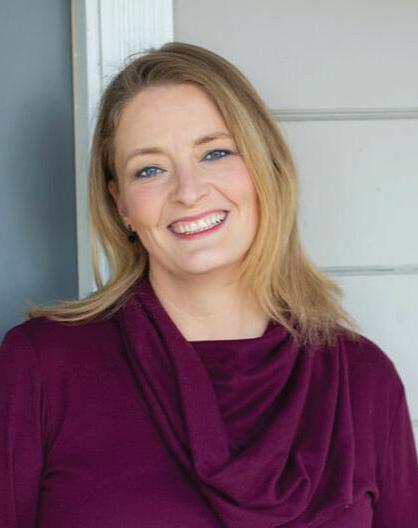
If your practice is anything like mine, things are busier, clients are more stressed, and sta ng is lower than usual. Veterinary medicine was already a tough job, and the pandemic, fires, and social unrest have made things harder for everyone. Recent polls in the Not One More Vet support groups found that 67 percent of veterinarians and 49 percent of our support sta members reported worse mental health and wellness than at the same time last year. We have been living in a state of emergency since March and it’s exhausting.
With this pandemic far from over, how can we start to claw back some of our well-being? I would propose a four-part strategy: acceptance, unapologetic self-care, ruthless priorities, and boundaries.
Let’s start with acceptance. It is okay to not be okay right now. It is rational and completely normal to feel stressed, anxious, and even occasionally terrified at what is happening right now. You might not be able to reach happy, or even satisfied every day. I would encourage to work towards (feeling) safe and supported. Happiness will come again, but we cannot force it. We can however be kind to ourselves and work to get in the right headspace to deal with our stress.
That is where self-care comes in. As a person going through a stressful time, the maintenance parts of self-care are critically important. Exercise, meditation, therapy, healthy eating, staying hydrated, and sleeping can help us deal with all of this stress better, yet they are the first things we cut when our schedule gets busy. I challenge you to give yourself one hour a day
to take care of yourself. Put it on your schedule and do not compromise on it. You deserve a single hour of your day, and if you make it a reality, it will better prepare you for whatever the day throws at you.
If you are having trouble finding that hour, ruthless priorities are in order. When you have too much to do, something has got to go. List everything you have going on right now and rank them in order of most to least important. The bottom item gets cut. Once you have more time, you can circle back around to it. Until then, it is not a priority. Check back after a week or two. Still running out of time? Cut another item. Repeat as necessary.
Let me assure you that the thing you cut will come knocking at your door asking for attention, which is why we have boundaries. Boundaries are what let us draw the lines we need to so we can pay attention to what is truly important to us. Fire that client, stop seeing new patients, and leave the clinic within 30 minutes of closing no matter what. Whatever your boundaries are, hold them tightly. We will have room to grow, expand, and give wiggle room again later. For now, we need to build up our walls to protect ourselves and our coworkers.
Years from now, we will look back on this and say “I survived 2020”. We will have stories to tell our grandkids from this crazy time. As the saying goes: The only way out is through. Take care of yourselves and your team, prioritize what needs your attention, hold your boundaries tightly, and put one foot in front of the other until this is done.
13 View this issue of the California Veterinarian online at cvma.net/publications.
Dr. Jurney graduated from the University of Georgia College of Veterinary Medicine in 2005, and completed a neurology residency from the University of Pennsylvania in 2009. She is the owner/operator of Jurney Veterinary Neurology in the San Francisco Bay Area. Dr. Jurney became passionate about veterinary wellness and in 2014, joined Not One More Vet (NOMV) and is its board’s vice president. She has completed suicide and crisis intervention training and has a Certi ed Compassion Fatigue Professional certi cate.
Carrie Jurney DVM, DACVIM (Neuro), CCFP
ON CALIFORNIA VETERINARY
The CVMA sent a survey on July 28, 2020 to member veterinarians and registered veterinary technicians asking for their opinion on how the COVID-19 pandemic has affected them and their practice. We received 611 responses.
California Veterinary Respondents
Financial Impact on California Veterinary Practices
50 percent reported positve impact over last year.
32 percent reported negative impact over last year.
Impact on 18 percent was equal to this time last year.
In regards to the top challenges that the pandemic has created, high caseloads and staff shortages are rated the highest, followed by a concern about contracting COVID-19.
Top Challenges Among California Veterinary Practices
Concern about contracting COVID
14 California Veterinarian • September–October 2020 cvma.net
0 50 100 150 200 250 RVT DVM Contract / Relief Worker DVM Associate DVM Owner/Medical Director
of sta Sta shortages High case load Curbside service 0123456789 10
Online school for children
VETERINARY PRACTICES
Veterinary Practice Caseload
More patient appointments than this time last year
Less patient appointments than this time last year
About the same number of patient appointments as this time last year
Many respondents commented on challenges with client relations, including an unusual number of anxious, rude, or hostile clients. Some expressed difficulty establishing rapport with new clients due to less direct contact. Members also conveyed concerns about interacting with clients who have varying degrees of concern about the pandemic. Many reported having difficulty enforcing rules requiring clients to wear masks, keep their distance, and to stay outside.
Other challenges brought on by the pandemic include staff exhaustion, mental health decline, worries about contracting COVID-19, especially by older members and those with underlying medical conditions, and an inability to work due to of illness, layoffs, family care, or reduced hours.
Impact On Veterinary Professionals Stress Level
Respondents described feeling overwhelmed, mentally exhausted, and complained about experiencing sleep issues, panic attacks, and other stress related medical issues. They cited a variety of contributors to their stress including worries about COVID-19 entering their practice, financial worries, work/family/personal care balance, consistency of COVID-19 prevention protocols, and general worry about the state of the world. Many attributed their stress to a high caseload. Members expressed frustration at not being able to see all of their clients, turning some away, and not being able to spend the appropriate amount of time with each patient. With an increase in caseload, staff shortages, and additional cleaning procedures, respondents described frustration about the inability to provide the level of patient care and client communication they had pre-COVID-19. Communication with clients has been complicated with clients being unavailable by phone, having blocked phone numbers, and the need to use personal phones when practice landlines are tied up. Similar to the comments regarding challenges created by the pandemic, many members cited stress caused by angry or rude clients. One comment said, “Owners have been particularly needy, more demanding, less patient, and more aggressive/rude towards doctors and staff.”
We would like to thank those who took the time to complete the survey. The CVMA will use this information to assist our members in navigating these challenging issues brought about by the pandemic.
Continued on Page 16
15 View this issue of the California Veterinarian online at cvma.net/publications.
0 50 100 150 200 250 300 350
on a scale of 1-10 0123456789 10
Average stress level among practice sta members
CVMA MEMBER RESPONSES TO COVID CONCERNS IMPACT OF COVID-19
We asked some of our member veterinarians, Drs. Jon Klingborg, Keith Rode, Cheryl Waterhouse, and Dayna Wiedenkeller, to describe how their practices have met the challenges created by the COVID pandemic.
The pandemic has tested practices’ ability to make drastic procedural changes to accommodate social distancing mandates. Checking patients in from parking lots has been a challenge to both practice sta and their clients.
Dr. Cheryl Waterhouse: We have a picnic table outside close enough that our Wi-Fi works (for our electronic medical records) for those few clients who insist on being present for the physical exam on their dog.
Dr. Dayna Wiedenkeller: Dangerous curbside challenges –loose collars, allowing pets to slip o leash (sta always carry a slip leash), clients putting leashes on their pet after they get out of the car (pet runs away), clients opening cat carriers in the parking lot (pet runs away). These are conversations sta have with clients at check-in.
Dr. Keith Rode: The problem we were having is that there were multiple clients needing to be checked out at any given time, but with 3-4 receptionists at the front desk, there was no central way to communicate who was ready to be checked out, and clients were falling through the cracks. Now, when someone needs to be checked out, the doctor or technician writes the information on a dry erase board in the checkout room, and the receptionist assigned to that duty stays in the room and checks people out by phone from there based on the one master list.
Communicating with clients has been a major challenge for doctors and sta .
Dr. Jon Klingborg: We are fortunate to be working with a system that allows us to text from our clinic phone number. This has been extremely e ective. The challenges are that some clients want to have ongoing conversations via text and there are simply times with a phone call and voice conversation is necessary.
Dr. Cheryl Waterhouse: The limiting factor used to be the number of exam rooms. Now the limiting factor is the number of phone lines. So, we got three cell phones. We don’t block the number so clients can call back on them but we have the calls forwarded to our main number.
Dr. Keith Rode: We started using an app that allows clients to live stream into the exam room so they could be “present” in real-time, which has certainly helped alleviate concern for many of our clients. Clients can also text in prescription refill requests and questions through the app, which means they do not have to call us and be put on hold as frequently.
As reflected in the COVID survey response, high caseloads and sta shortages are the most prominent challenges currently faced by veterinary practices.
Dr. Dayna Wiedenkeller: Ultimately, we cut back our sign-in hours by one hour for morning clinics and one hour for afternoon clinics to help limit the number of patients.
Dr. Cheryl Waterhouse: This is not new but we have scribes, one for each doctor, who inputs all information into the medical record. They follow the doctor with a laptop to input the history, the physical examination findings as the doctor verbalizes it, the assessment, and the plan. The doctor just reviews these medical notes –this probably saves each doctor two to three hours a day, reducing stress.
Maintaining positive client relationships during the pandemic has been challenging when direct communications are di cult.
Dr. Jon Klingborg: It has been di cult with curbside service to maintain some of these relationships. I’ve tried running back and forth and in and out of the parking lot to talk with clients, especially with new clients or those that have their first puppy or kitten. We’ve done phone calls with clients. We’ve increased our capacity for texting. All of these things help and all of them appeal to specific types of clients but nothing takes the place of the in-person handson physical exam and conversation with the clients.
Dr. Dayna Wiedenkeller: Our sta is excellent at triaging cases and explain to owners of a non-urgent patient that the doctors are still seeing patients but are not able to add another patient that day. The act of triaging the pet gives the owner the peace of mind that the pet is ok until tomorrow.
Advice for successful strategies for navigating the challenges of COVID:
Dr. Dayna Wiedenkeller: We held daily, almost hourly, mini sta meetings to determine protocol, have input, and buy-in from our sta . We all agreed that if something made one person uncomfortable, we fix it, change it, or don’t do it.
Dr. Jon Klingborg: People have gotten through pandemics before with far fewer resources than we have. I’m going to “stay positive” and do what I can to keep my sta and coworkers as happy as possible.
16 California Veterinarian • September–October 2020 cvma.net
Fall Seminar To-Go
Live Interactive Online Learning
October 9–11, 2020
Get your CE to go, delivered to your home or wherever you have an internet connection. Due to COVID-19 public gathering restrictions, we are presenting the CVMA Fall Seminar online—live and interactive. We are bringing DVMs three halfday sessions of thought-provoking information on radiology and dermatology and two half-day sessions for technicians on pain management and anesthesia. DVMs can earn up to 12 CEUs and technicians can earn up to eight CEUs. Since you will not be on camera, dress code is anything from PJs to black-tie—you decide.
VETERINARIAN TRACK (FRIDAY–SUNDAY • 12 CEUS)
Andrea Cannon, DVM, DACVD Dermatology


Dr. Cannon received her DVM from UC Davis in 1993 and completed a residency in veterinary dermatology in 1996. She owns Animal Dermatology & Allergy, Inc. Dr. Cannon is a full member of the American Academy of Veterinary Dermatology. She has co-authored several articles and has spoken at many lectures, presentations, and conferences throughout the US and abroad.

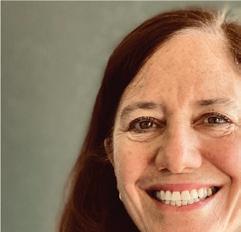
Trisha Oura, DVM, DACVR Radiology
Dr. Oura received her DVM from Tufts University in 2008. She completed her rotating small animal internship, diagnostic imaging residency, and a post-doc teaching position at North Carolina State University, and became board certified by the American College of Veterinary Radiologists in 2012. Since then, she has worked in telemedicine, private practice, and academia, most recently joining Veterinary Specialty Hospital in San Diego. Although she loves all imaging modalities, she especially enjoys CT and radiography.
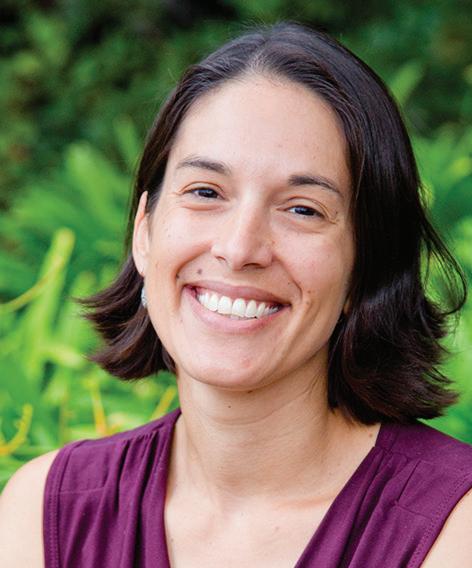
TECHNICIAN TRACK (SATURDAY–SUNDAY • 8 CEUS)
Stephen Cital, RVT, RLAT, SRA, VCC, CVPP, VTS-LAM (Res. Anesthesia) Pain Management and Anesthesia
Mr. Cital is a registered veterinary technician and executive director of the Academy of Laboratory Animal Veterinary Technicians and Nurses. While he specializes in anesthesia and pain management, he is also a veterinary cannabis counselor, one of a handful in the country, and is an independent researcher on the topic. He serves on advisory boards for local veterinary technician colleges and is on the Aratana/Elanco Technician Council of Pain Experts.
Sponsored by
PREFERRED EMPLOYERS
Insurance
| a Berkley Company
For more information on this and other CVMA CE events, visit the Learning tab at cvma.net or call 800.655.2862.
17 View this issue of the California Veterinarian online at cvma.net/publications.
CE 2 GO!
Register by September 30
Register for a single day or save by registering for the full seminar.
CNA - New Carrier for VISC
Veterinary Insurance Services Company (VISC) along with the California Veterinary Medical Association (CVMA) is pleased to announce a new insurance carrier partner for our CVMA group property and liability insurance program. We are extremely excited to have formed a partnership with CNA Financial Corporation (CNA) who will now be providing competitive insurance products and services to our CVMA members. Product offerings will include the Veterinary Business Package, commercial automobile, and commercial umbrella liability policies.
Expiring Allianz/Fireman’s Fund business insurance policies will be transitioned to the new CNA program. CNA will continue to provide many of the coverages and features currently offered through the CVMA’s memberowned insurance broker, VISC. These features include:
• Comprehensive business coverage specifically developed for the veterinary profession
• Animal bailee, care, custody, or control of clients’ animals – Up to $1M limit available, $10,000 cost of medical care, or the replacement value of the animal (whichever is greater, no per animal limit)
• Veterinary Professional Liability – $1M/$2M or $2M/$4M limits available, includes a Consent to Settle clause and Veterinary Medical Board defense with a $100,000 limit (coverage extends to employees, interns, externs, and volunteers)
• Umbrella Liability – Up to $10M limits available ($5M for large animal practices)
• Direct Bill Premium Billing – Many premium payment options including ACH/auto pay with bank check or credit card
One of the unique features of the VISC insurance program historically has been the ability to offer earthquake coverage as part of the Business Package policy. We have also provided flood damage to business personal property as a standard coverage. As we move forward, earthquake and flood coverages will no longer be provided in the Business Package policy. These coverages will now be offered as separate, freestanding policies upon request.
The CVMA insurance program is committed to providing veterinary-specific insurance products that will help your practice thrive. Contact VISC for more information at visc-ins.com or call the VISC office at 888.762.3143.
PROFESSIONAL
CVMA Insurance Services California Veterinarian • September–October 2020 cvma.net 18
LIABILITY BUSINESS AUTO BUSINESS PACKAGE GENERAL LIABILITY UMBRELLA LIABILITY
Employee Injury Investigations – What is the Purpose?
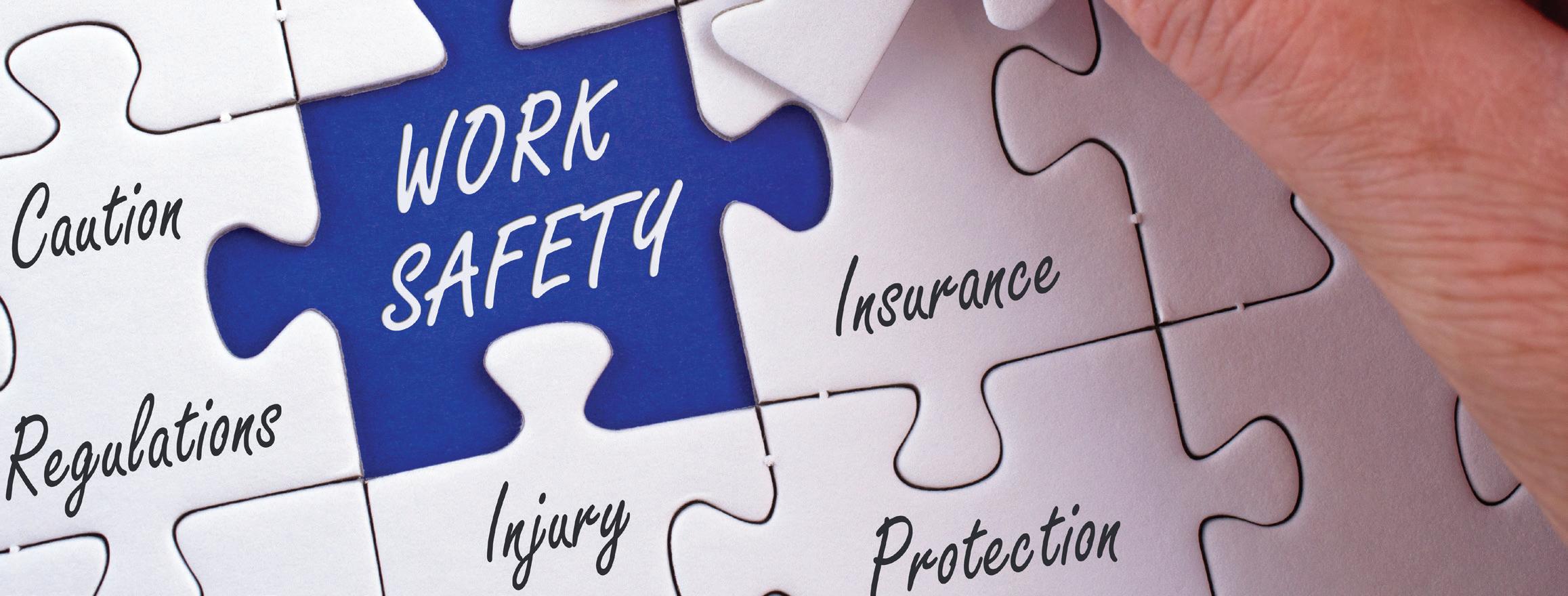
When a staff member is injured while conducting their job duties, it is often a very unsettling experience. They may be in pain; medical treatment may be necessary; they may need to miss work; and may have to deal with the insurance company, etc. In any case, the incident should be investigated.
Let us take a step back and explore the incident investigation process to get a better understanding of why an injury or incident review is not only necessary, but also beneficial. The safety coordinator should interview the injured staff member and any witnesses, and examine the workplace for factors which might have contributed to the incident such as a broken ladder rung which contributed to a fall, a wet area on a floor due to a leaking pipe, etc. Once the cause of the accident has been determined and corrective actions have been made, the safety coordinator should record their findings and the actions taken. All staff members potentially benefit from a thoughtful and thoroughly completed incident investigation. First, to be clear, it is not an investigation of the injured worker, but rather an investigation of the conditions, procedures, processes, and equipment (or lack thereof) which resulted in a worker being injured. Second, the investigation is a requirement of the practice’s Illness and Injury Prevention Plan, which is required by the state of California.
The process is focused on the circumstances that resulted in the injury, but what is the purpose? There are many. It is a fact-finding mission and not a fault-finding mission, with the primary purpose of determining the root cause of the incident. Even though the injured staff member will
be asked many questions, they are all asked in the spirit of fleshing out the root cause of the incident. All incidents have causes or reasons for happening. Even if a shortcut was taken to a prescribed procedure, there is still a reason the shortcut was taken. In many cases, there is more than one root cause and multiple contributing factors.
The secondary purpose, which is equally important, is to arrive at corrective actions that will prevent, or at least lessen, the possibility of the incident recurring. In other words, the process contributes to a safer environment. Additional purposes and benefits of the investigation process include the following:
Help to identify and eliminate other hazards
Help to identify and correct missing procedures, processes, and controls
Provide an opportunity to improve the training process
Provide an opportunity for management and staff to work collaboratively
Foster a continuous improvement atmosphere and strong safety culture
Give staff members an opportunity to recommend corrective actions
In conclusion, full participation and viewing this as a positive process, can lead to continuous safety improvement in the workplace.
CVMA Insurance Services 19 View this issue of the California Veterinarian online at cvma.net/publications.
Information provided by Preferred Employers Insurance, a Berkley Company.
SARS-CoV-2 (Causative Agent for Human COVID-19) Testing in Animals
By Rebecca Campagna, DVM, MPH; Veterinarian
Our current understanding of the transmission of SARSCoV-2, the viral agent responsible for the COVID-19 outbreak, in both human and animal populations, is continually evolving. As more information becomes available about the susceptibility of different animal species to infection with SARS-CoV-2, the clinical manifestations in those species, and the risk of transmission between species, government agencies and non-governmental organizations are responsible for providing timely and accurate guidance to the general public. Veterinarians can stay up to date on the latest evidence-based guidance by frequently referring to websites for state and federal governmental agencies, such as the California Department of Public Health (CDPH) and the U.S. Centers for Disease Control and Prevention (CDC), as well as non-governmental organizations, such as the American Veterinary Medical Association (AVMA).
Guidance for Testing Animals for SARS-CoV-2
Based on current evidence, animals do not appear to play a significant role in spreading SARS-CoV-2, even though the current theory is that animals were the source of the disease agent. Routine testing of animals for SARS-CoV-2 is neither informative nor recommended at this time, and testing should be conducted only under specified circumstances. The California Department of Food and Agriculture (CDFA) and CDPH have developed a guidance document for the testing of pets, livestock, and other animals for SARS-CoV-2. The document describes procedures and criteria for testing animals and is intended to guide veterinarians considering SARS-CoV-2 infection in patients. These protocols are consistent with the positions of the United States Department of Agriculture (USDA),
CDC, and AVMA. The AVMA has developed a flow chart to assist veterinarians in deciding whether to test a patient for SARS-CoV-2. The flow chart is available on the AVMA’s website: ebusiness.avma.org/files/coronavirus/COVID-19Testing-Flowchart.pdf.
Veterinarians considering testing patients for SARS-CoV-2 are encouraged to contact their local health department for consultation. The CDPH, CDFA, and the California Department of Fish and Wildlife (CDFW) are also resources for veterinarians and can consult on cases involving companion animals, livestock, and wildlife, respectively. Questions for CDFA can be directed to the following email address: CDFA.AHFSS_ COVID19_Animal_Testing@cdfa.ca.gov.
While SARS-CoV-2 infection in an animal is not currently reportable to the CDPH, the USDA must report these cases to the World Organisation for Animal Health (OIE) and any presumptive positive test result for SARS-CoV-2 in animals must first be confirmed by the USDA’s National Veterinary Services Laboratories (NVSL). Presumptive positive test results from academic, private, or other commercial laboratories must be reported by laboratories or submitting veterinarians to: CDFA.AHFSS_COVID19_Animal_Testing@cdfa.ca.gov, within one working day to arrange for confirmatory testing.
Resources for Veterinarians
The CDPH/CDFA guidance document can be found on the CDPH’s website: cdph.ca.gov/ Programs/CID/DCDC/Pages/COVID-19/ SARSCoV2(causativeagentforhumanCoVID19 TestinginAnimals.aspx.
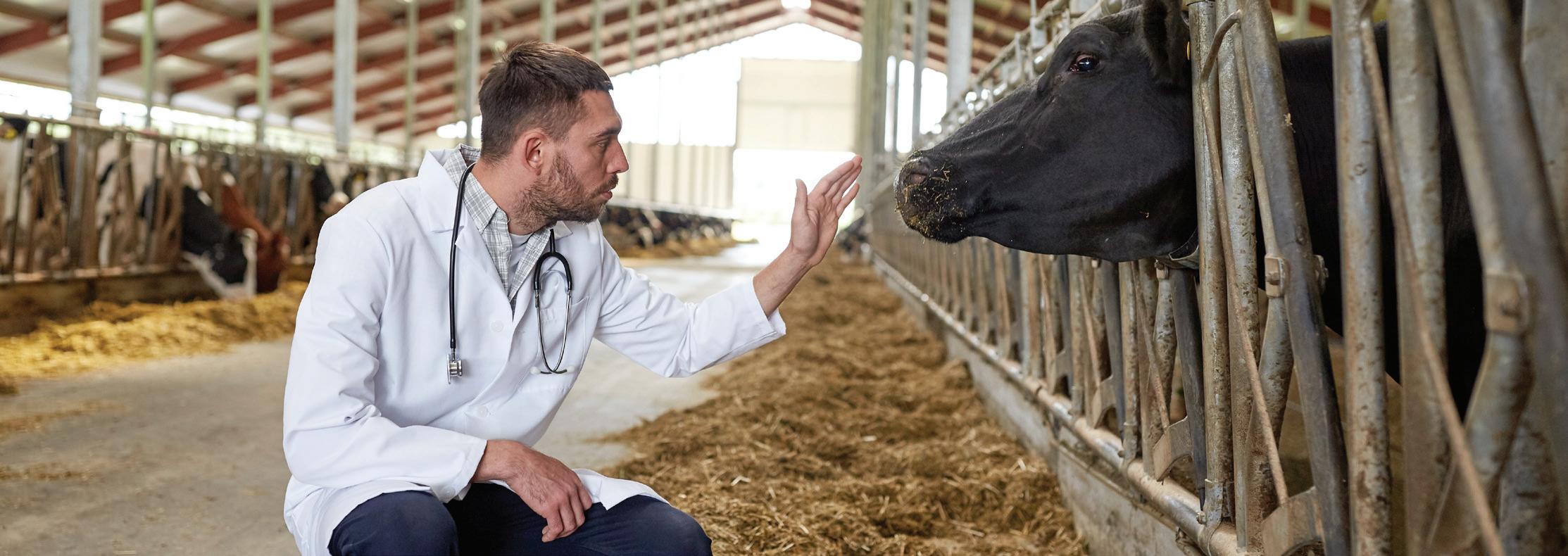 with the California Department of Food and Agriculture
with the California Department of Food and Agriculture
20 California Veterinarian • September–October 2020 cvma.net
Continued on Page 21.
New Euthanasia Requirements Take Effect in California
By Annette Jones, DVM; CA State Veterinarian
Most renderers have a zero tolerance for euthanasia solution in several of their products due to their own internal quality control systems and a relatively new and actively enforced FDA rule. Any mistake in separating euthanized animals from other fallen stock to prevent cross-contamination can shut them down. In support of this situation, a new regulation requiring marking euthanized animals went into e ect on July 30, 2020. Veterinarians that euthanize animals (not including domestic dogs, cats, and pet birds) with barbiturates must mark the forehead with an Orange B that is at least four inches in height (or as large as fits), at the time of euthanasia. We have been asked about the use of alternate chemical euthanasia, and until more is known, a best practice is to also mark these animals on their forehead.
There are current carcass management challenges in California and this new regulation does not solve the problem beyond ensuring rendering remains a carcass disposal option where possible. This option is important because renderers play a critical role in converting materials to their highest and best use while protecting the environment. There is some good news. The CDFA recently issued a license to a new renderer in Southern California, expanding overall capacity. Like several existing renderers, this company will accept euthanized animals.
Continued from Page 20
Additional resources for veterinarians include guidance for veterinary practices and informational handouts for pet owners:
CDPH Veterinary Public Health Section webpage on SARSCoV-2 (cdph.ca.gov/Programs/CID/DCDC/Pages/VPHSCOVID-19.aspx):
• COVID-19 Guidance for Veterinary Practices – Guidance for in-clinic infection prevention and control measures and modification of veterinary appointment protocols
CDC webpage on COVID-19 and animals (cdc.gov/ coronavirus/2019-ncov/animals/pets-other-animals.html):
• Interim
Infection Prevention and Control Guidance for Veterinary Clinics Treating Companion Animals
During the COVID-19 Response – Guidance for in-clinic infection prevention and control measures, modification of veterinary appointment protocols, recommended personal protective equipment (PPE) for each companion
Thank you for being a key part of the carcass management solution by marking euthanized livestock and horses while we continue to work with stakeholders and other agencies to better understand the scope of the problem and search for other viable end of life options.
New Regulation
Section 1180.43.1. Euthanized Animals.
(a) All animals as defined in Food and Agricultural Code section 19201, including ratites, Camelidae, and Cervidae and those maintained in aquaria, petting zoos, zoological gardens, and other public exhibitions euthanized with barbiturates shall be marked with the letter “B” on the forehead by the person administering the Barbiturate. Each letter “B” shall be:
(1) Made using an orange all-weather livestock marker or orange pavement marking spray paint approved by the Department as suitable for producing a permanent mark;
(2) No less than four (4) inches in height unless the area to be marked is less than four (4) inches, in which case, the mark shall be as large as possible; and
(3) Legible at a distance of not less than ten (10) feet.
(b) This section shall not apply to domestic dogs and cats or pet birds.
animal history scenario, and instructions regarding extended use and reuse of PPE.
• What You Need to Know About COVID-19 and Pets –Handout with information on clinical signs and testing in animals, what to do if an owner thinks their pet is sick, and guidance for owners who test positive for COVID-19.
• FAQs about COVID-19 and Animals–Recommendations for pet owners on how to keep pets safe and manage contact with groomers, dog daycare, and other public areas.
In July 2020, OIE updated its document that provides considerations on sampling, testing, and reporting of SARSCoV-2 test results for animals. The document describes high level principles to guide sampling and testing and the rationale for testing animals to manage risk. The document can be found on OIE’s website:oie.int/fileadmin/Home/ MM/A_Sampling_Testing_and_Reporting_of_SARS-CoV-2_ in_animals_3_July_2020.pdf.
21 View this issue of the California Veterinarian online at cvma.net/publications.
The CVMA’s Commitment to Animals in Disasters
The CVMA is proud to commemorate 30 years of service to animals in disasters. Since 1990, the CVMA has provided support to animals in fires, floods, and other natural disasters. Its formation of the 501(c) (3) California Veterinary Medical Foundation (CVMF) in 1995 further advanced the profession’s disaster e orts by providing support to facilitate disaster preparedness and response. In 2009, the CVMA registered the California Veterinary Medical Reserve Corps (CAVMRC) with the federal government. The CAVMRC is one of just a few veterinary medical reserve corps in the country; its mission is to provide veterinary care to animals during declared emergency responses. Since its inception, the CAVMRC has steadily grown to be the largest veterinary medical reserve corps in the country with over 2,300 members, and the only statewide medical reserve corps in California. Through longstanding dedication, the CVMA has actively helped shape the state’s animal emergency management system through work with the California Department of Food and Agriculture (CDFA), the Governor’s O ce of Emergency Services (Cal OES), the California Emergency Medical Services Authority (Cal EMSA), and the California Animal Response Emergency System (CARES).
Recently, the CAVMRC Steering Committee met to determine priorities and projects for the CVMA disaster program. Co-chaired by Dr. Jay Kerr and Dr. Diane McClure, the steering committee is committed to further developing the CAVMRC and meets annually
to review CAVMRC activities and make future plans. Here is a review of some recent CAVMRC activities:
• The CVMA sta upgraded emergency medical supply caches in Northern, Central, and Southern California at volunteer host hospitals. The caches are available for deployment with CAVMRC volunteers during a disaster response. They contain items such as medications, bandaging materials, personal protective equipment, and cleaning supplies to sustain early response triage care.
• The CAVMRC obtained bandage materials, hand sanitizers, and other items through donations to prepare for upcoming disaster responses.
• The CAVMRC Volunteer Handbook was updated and provides o cial policies, procedures, and guidance for CAVMRC volunteers. Available at cavmrc.net, the handbook now contains species-specific animal care protocols as well as the CAVMRC burn treatment protocol.
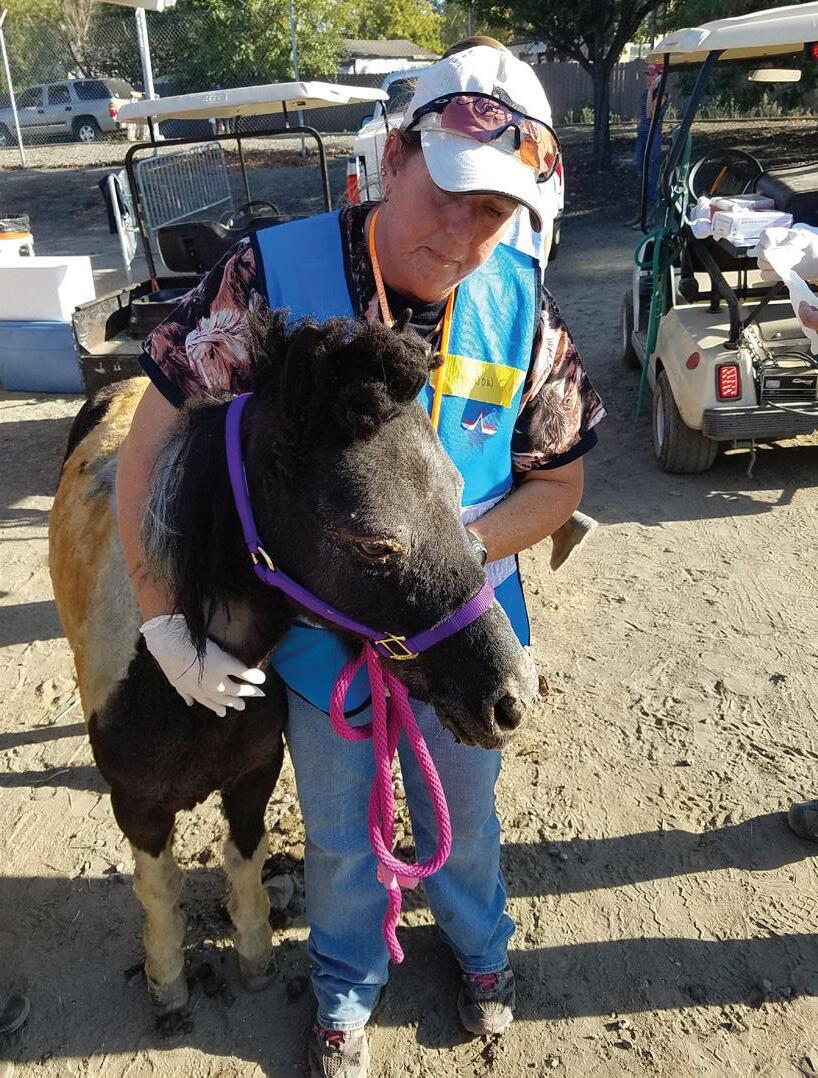
CAVMRC membership is free and available to all members of the veterinary practice team. If you are a veterinarian, RVT, veterinary assistant, or veterinary student, you are qualified! If you would like more information or are interested in joining the CAVMRC, visit cavmrc.net today.
Live Online CAVMRC Training – November 8, 2020
Animals in Disasters – Common Medical Conditions (6.5 CEUs)
The CAVMRC is o ering low-cost, interactive online continuing education for veterinarians, RVTs, veterinary assistants, and veterinary students.
This course provides detailed information on emergency/critical care topics that can benefit you in everyday practice as well as during a disaster response.
Traumatic injuries/triage
Fire-related Injuries - Burn assessment
Fire-related Injuries - Burn dressings
Disease outbreaks in temporary shelters
Deployment in the CAVMRC
By registering for this course, you are also registering to become a volunteer member of the CAVMRC, if you are not already a current member. CAVMRC membership is free and participation is strictly voluntary. This course is only available to CAVMRC members.
Full information and registration can be found at cavmrc.net, or call 800.6555.2862.
22 California Veterinarian • September–October 2020 cvma.net
CVMA Completes $1M Animal Disaster Grant
When the Governor’s O ce of Emergency Services (Cal OES) reached out to the CVMA in 2019, they made it clear that Governor Newsom wanted to do something to help animals in disasters through his Listos California project. The CVMA has a long history of helping California’s animals in disasters and had successfully completed a grant project for Cal OES in 2012. The CVMA was selected to complete the project to assist animals during disasters and to provide supplies for emergency responders. The latest grant was for $1M and its distribution was slotted to take place over 18 months.
The CVMA identified recipient county animal service departments, coordinated competitive bids for cache item procurement, facilitated cache assembly, and scheduled delivery to host locations. All 52 counties in California now have caches thanks to the CVMA’s e orts with both grants.
The help came in the form of 20-foot long cargo containers filled with non-perishable emergency animal sheltering supplies. Through many deployments of the California Veterinary Medical Reserve Corps (CAVMRC) through the years, the CVMA has observed
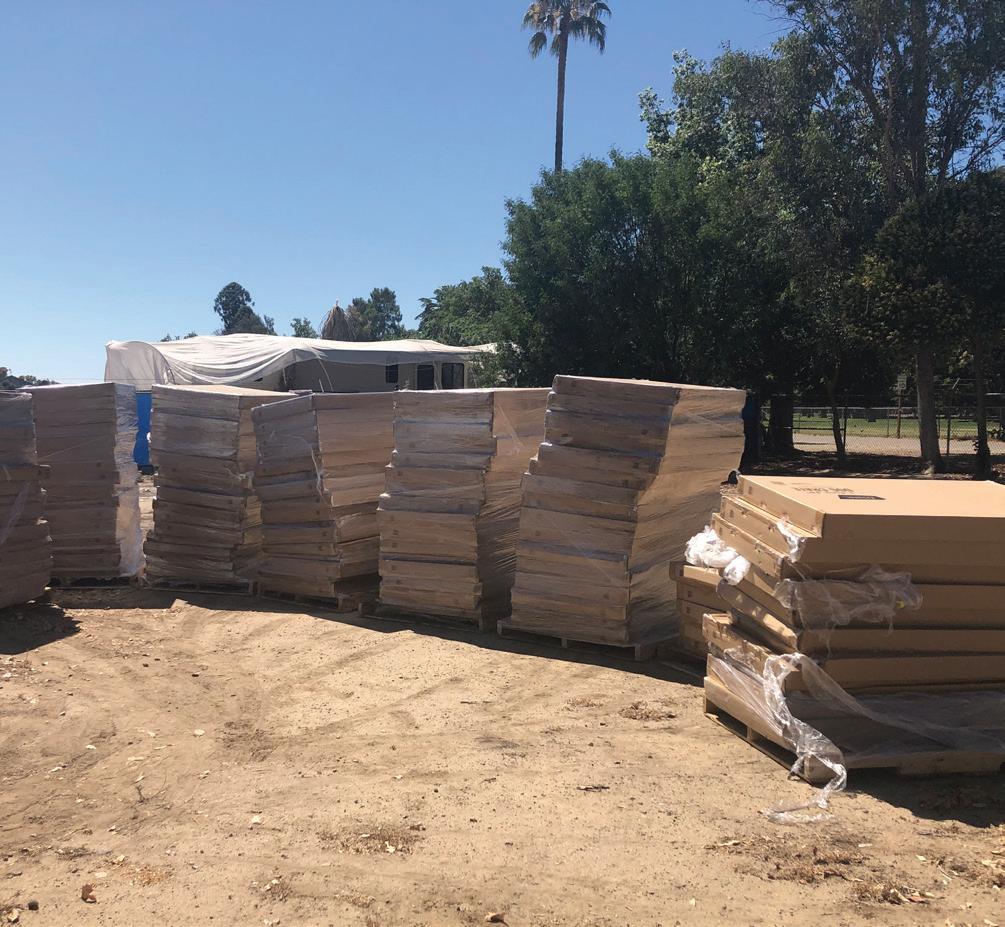
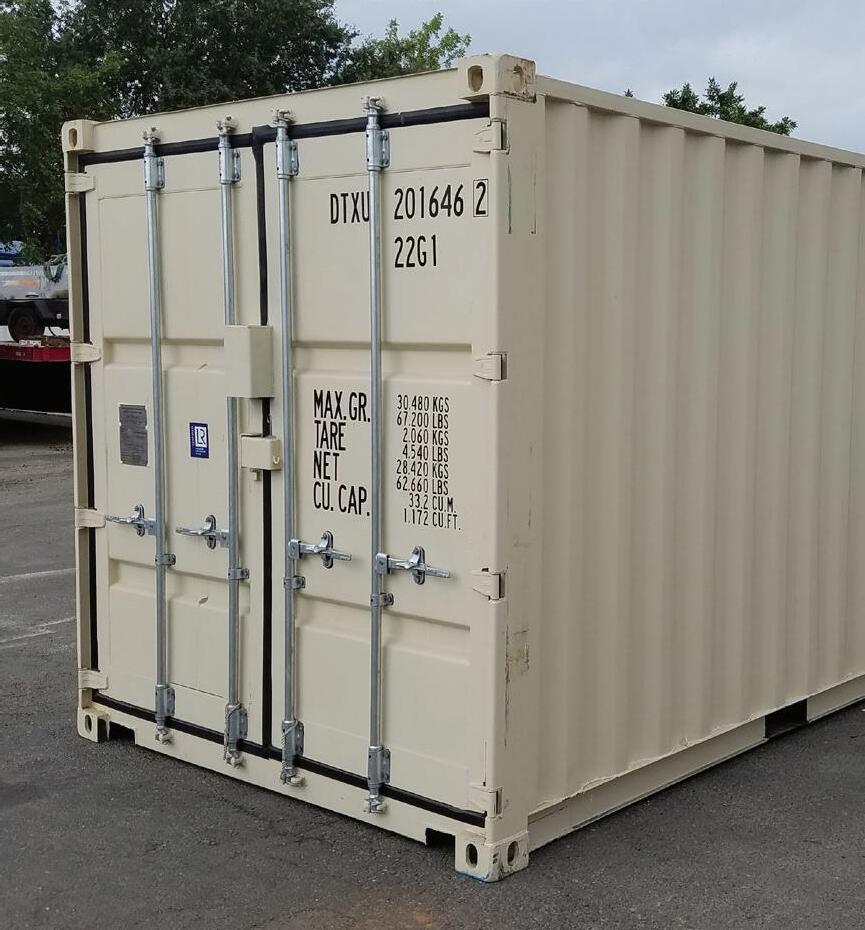
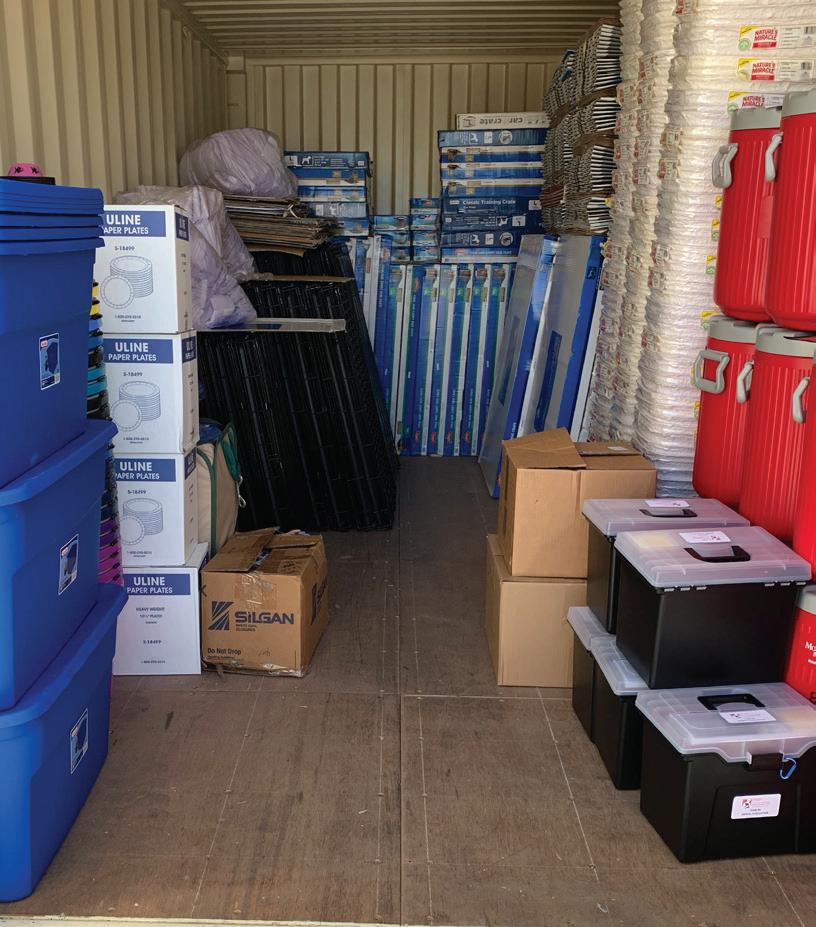
that during the initial phase of a disaster response, local animal authorities must have some ability to create emergency sheltering facilities to house animals. As a result of this grant project, every county in California now has an emergency sheltering supply cache with three sizes of cages, disposable bowls, disposable plates, clipboards, zip ties, a roller cart to move supplies, kitty litter, equine and dog/cat identification bands, leashes, and storage bins.
The Governor’s o ce gave the CVMA a very tight timeline of 18 months to complete the massive procurement of cargo containers, thousands of cages, and all of the other supplies. After just one year, the CVMA had the original project completed, under budget. With the remaining time and money, the CVMA was able to fill several individual shelter requests for specific disaster supplies, including the purchase of portable corral fencing to house 80 horses in Fresno, California.
Each county is responsible for its donated supply cache, but agreed to share the supplies with neighboring counties during an emergency. This project will benefit animals in perpetuity and will help counties in developing their animal disaster response capacities statewide.
23 View this issue of the California Veterinarian online at cvma.net/publications.
“All 52 counties in California now have caches thanks to the CVMA’s e orts with both grants.”
A Fond Farewe
When Valerie Fenstermaker was hired by the CVMA in 1990, little did she know that over 30 years later she would be retiring as its executive director having successfully navigated the association through a myriad of changes. Could she have possibly foreseen the following numbers?
8,000 CVMA members
30 CVMA boards
72 Veterinary Medical Board meetings attended
96 CVMA and 52 VISC board meetings attended 250+ CVMA committees and task forces
2,000+ legislative bills and regulatory packages
30 annual conferences plus 72 other CE events
120+ publications of the California Veterinarian
50+ staff members
When she was initially hired as a part-time finance coordinator, if someone had told Val that these numbers would be just part of her vast responsibilities in the coming years, would she have believed it? Fortunately for the California veterinary profession, her approach to leadership and life is to take it head-on. Val became the finance director, then assistant executive director and ultimately the executive director, where she has served for the last 16 years. She didn’t just take on the challenges of being the executive director of the largest state veterinary medical association in the nation, she excelled at it. The Gentle Doctor Award, the American Society of Veterinary Medical Association Executives “Executive of the Year” Award, and the three CVMA President’s Awards presented to her over the years are testament to her dedication.
Val has poured her heart and soul into making the CVMA the respected voice, the resource, and the community for veterinarians across the state. She takes pride in having
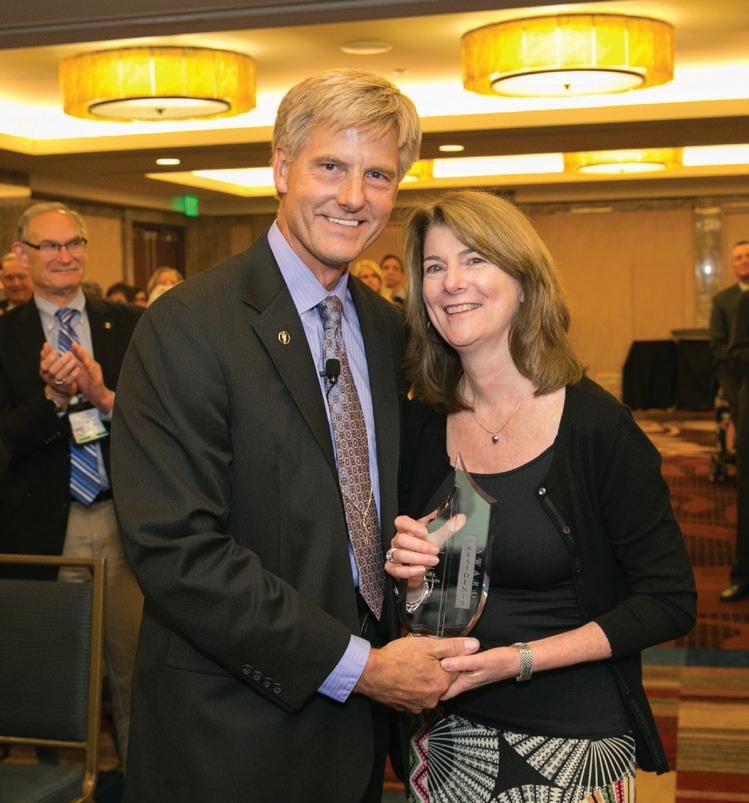
“served the CVMA members with a passion for the profession that has never wavered.” When asked which of her accomplishments makes her the proudest, her response was, “Our many legislative successes that have served to protect and enhance the quality of veterinary medicine and the welfare of animals.”
Over the last 24 years, she has, along with the CVMA’s Legislative Committee and lobbyists, reviewed and worked on more than a thousand bills affecting the veterinary profession and the wellbeing of animals in California.
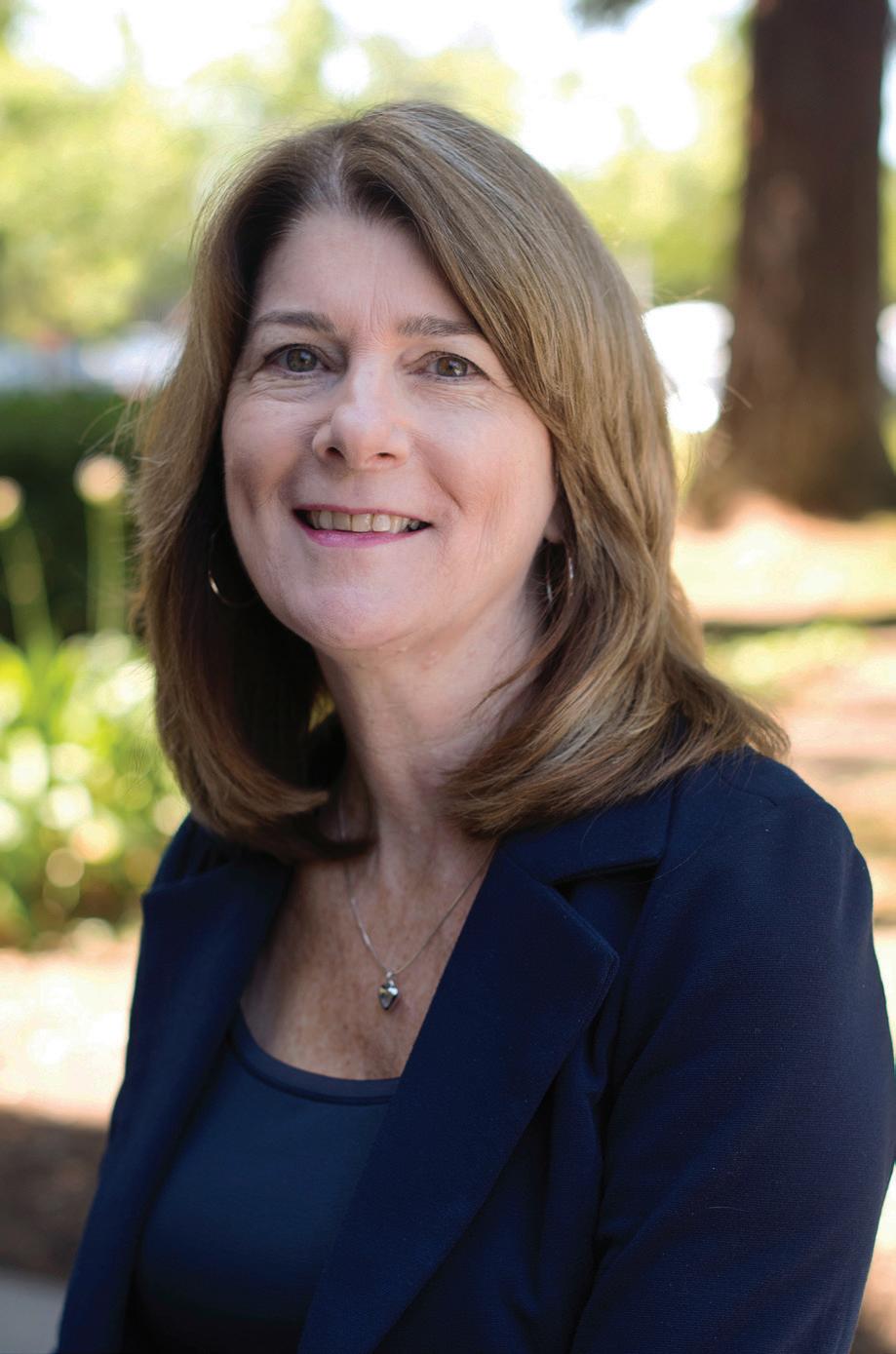
Since becoming the executive director in 2004, Val has worked with the CVMA board to oversee some remarkable changes in the CVMA and the veterinary profession: CVMA membership has steadily climbed from 5,300 members to over 7,800 members; the association’s reserves have been built to ensure financial security; the number of legislative issues relating to animals and the profession has increased dramatically; and the CVMA has established itself as
the go-to association for legislators and state agencies. Many new member benefits have also been introduced over the last 16 years.
Thirty years of service to the CVMA have produced moments of joy, struggle, worry, success, and pride for Val. The friendships she has made are dear to her and she will miss her participation in the veterinary profession.
24 California Veterinarian • September–October 2020 cvma.net
Dr. Ron Kelpe Presenting Valerie Fenstermaker with the President’s Award.
What does the future hold? Well, board meetings at the large conference room table will soon be replaced with time at her kitchen island with her three young granddaughters. Instead of cultivating new member benefits, Val will be tending her garden and cooking Italian food and reading bylaws will be replaced with reading good books. And as for her busy schedule, she can say “farewell” to that…and “hello” to never-ending weekends. The Board and the staff of the CVMA will miss Val immensely and wish her all the best for a happy, healthy retirement.
Taking the Helm
Finding someone to replace Val as the CVMA’s executive director was no easy task. Although an extensive search was conducted, the perfect candidate was right in plain sight – the CVMA’s legal representative, Dan Baxter.
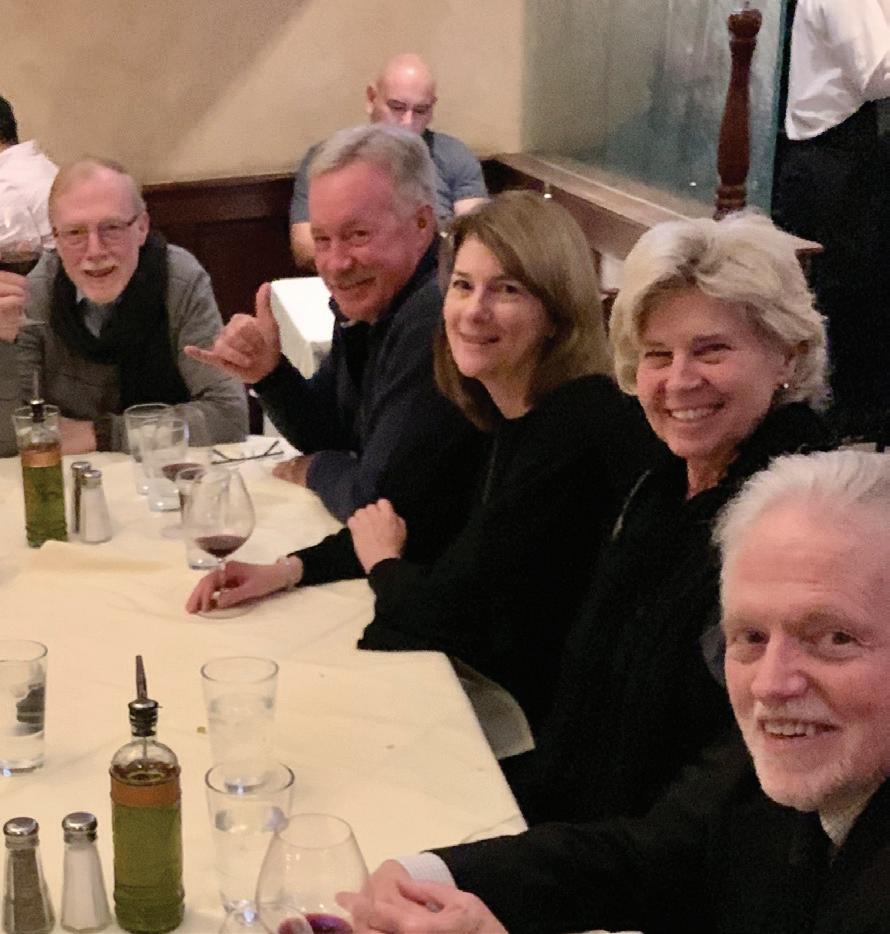



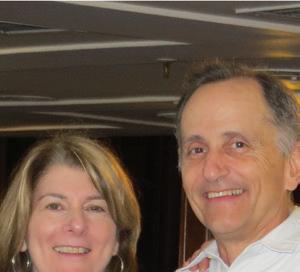
Dan has worked hand-in-hand with the CVMA for the past twenty years as the association’s legal counsel at the law firm of Wilke Fleury LLP, where he was a partner. He has worked with Val and the CVMA and VISC boards over the years drafting and reviewing contracts, working on legislative initiatives and interpreting legislation, representing the CVMA in litigation, penning articles for California Veterinarian, and presenting at both the Pacific Veterinary Conference and in the CVMA’s online seminars. He has also worked extensively with CVMA members through (1) the CVMA Legal Services Program, providing legal advice as needed, and (2) as panel counsel to VISC insureds in proceedings before the Veterinary Medical Board. All of this work has given him an insider’s view and appreciation for the issues faced both by veterinary professionals and the association.
Dan, a Sacramento native, graduated from the University of North Carolina, Chapel Hill and received his law degree from UCLA. He has worked at Wilke Fleury since 1999 where his practice primarily focused on complex business litigation and trial work. In addition to his work with the CVMA, Dan also performed large volumes of work for other professional associations, including the California Optometric Association.
Ready for a change after twenty-one years as a lawyer, Dan is excited to work for the association and the profession with which he has become so familiar. “I am looking forward to working for a singular purpose – one that I am passionate about.”
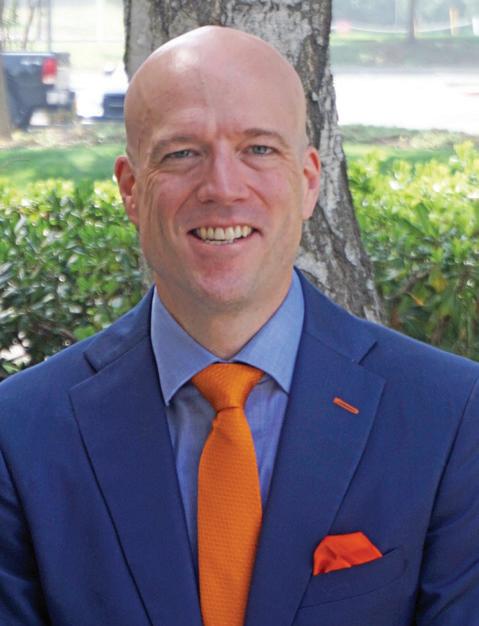
When asked about what challenges he foresees, he replied, “I think our greatest challenge as an association is making sure we are speaking to all vintages of practitioners. We must honor the past but be flexible and modern enough to keep up with the changes the profession is facing.” Dan is also looking forward to bringing greater attention to the issue of diversity and inclusion in the profession.
In his spare time, Dan is working on mastering his grasp of the Italian language through group study and private lessons. He developed his love for the language on a trip to Europe in 2016 and hopes to make a return trip to Italy soon. He enjoys dabbling in mixology, weekend travels, watching a variety of sports, reading, working out, and spending time with his girlfriend Heather, who also happens to be a lawyer. They have three cats, Pali, Tiki, and Gnocchi, and an exuberant two-year-old yellow lab named Nala.
With his considerable knowledge of the workings of the CVMA, Dan is ready to hit the ground running. We would like to extend him a warm welcome!

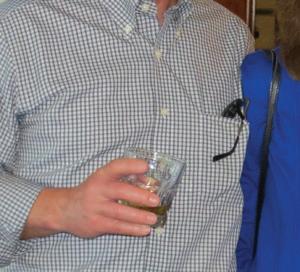
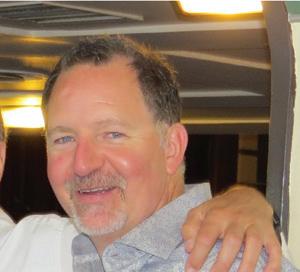

25 View this issue of the California Veterinarian online at cvma.net/publications.
Dr. Dan Segna, Valerie Fenstermaker, the late Dr. Ron Faoro, and Dr. Ken Pawlowski
Dr. Richard Sullivan, Dr. Bill Grant, Valerie Fenstermaker, Dr. Dayna Wiedenkeller, and Dr. George Bishop
The Veterinarian-Client-Patient Relationship is Condition-Speci c
By
Grant Miller, DVM, CVMA Director of Regulatory Affairs
Commonly, veterinary practices will request that clients bring animal patients in for an annual exam in order to maintain a veterinarian-client-patient relationship (VCPR). Sometimes practices also administer vaccinations at the annual exam. Some practices will then mistakenly interpret the “annual exam” to mean that the practice, including any veterinarian who works in the practice, has a valid VCPR with the client and animal patient for a period of one year. This is only partially true. It is important to understand VCPR law to avoid enforcement action by the California Veterinary Medical Board (VMB).
The California Code of Regulations, Title 16, Section 2032.1 defines the requirements of a valid VCPR in this state. The regulation states:
(a) It is unprofessional conduct for a veterinarian to administer, prescribe, dispense or furnish a drug, medicine, appliance, or treatment of whatever nature for the prevention, cure, or relief of a wound, fracture or bodily injury or disease of an animal without having first established a veterinarian-client-patient relationship with the animal patient or patients and the client, except where the patient is a wild animal or the owner is unknown.
(b) A veterinarian-client-patient relationship shall be established by the following:
(1) The client has authorized the veterinarian to assume responsibility for making medical judgments regarding the health of the animal, including the need for medical treatment,
(2) The veterinarian has su cient knowledge of the animal(s) to initiate at least a general or preliminary diagnosis of the medical condition of the animal(s). This means that the veterinarian is personally acquainted with the care of the animal(s) by virtue of an examination of the animal or by medically appropriate and timely visits to the premises where the animals are kept, and
(3) The veterinarian has assumed responsibility for making medical judgments regarding the health of the animal and has communicated with the client a course of treatment appropriate to the circumstance.
(c) A drug shall not be prescribed for a duration inconsistent with the medical condition of the animal(s) or type of drug prescribed. The veterinarian shall not prescribe a drug for a
duration longer than one year from the date the veterinarian examined the animal(s) and prescribed the drug.
(d) As used herein, “drug” shall mean any controlled substance, as defined by Section 4021 of the code, and any dangerous drug, as defined by Section 4022 of the code.
(e) No person may practice veterinary medicine in this state except within the context of a veterinarian-client-patient relationship or as otherwise permitted by law. A veterinarian-clientpatient relationship cannot be established solely by telephonic or electronic means.
(f) Telemedicine shall be conducted within an existing veterinarian-client-patient relationship, with the exception for advice given in an “emergency,” as defined under section 4840.5 of the code, until that patient(s) can be seen by or transported to a veterinarian. For purposes of this section, “telemedicine” shall mean the mode of delivering animal health care services via communication technologies to facilitate consultation, treatment, and care management of the patient.
When reading the regulation, it becomes clear that a VCPR must be established by the veterinarian for each individual condition that he or she diagnoses and treats. For instance, if an animal patient has an appointment for vaccines in January (that some call the “annual exam”), the veterinarian performs an appropriate examination and communicates with the client at that time in order to give the vaccines. Thus, a VCPR is established specifically for this diagnosis and treatment. But if the same animal
Compliance Corner
California Veterinarian • September–October 2020 cvma.net 26
patient is limping in March, the veterinarian cannot advise, prescribe, or provide treatment for that condition until a VCPR has been established by virtue of an in-person physical examination of the animal and communication with the client. The fact that the animal came in a couple of months before is irrelevant, because the VCPR established at that time for the vaccinations di ers from the present condition. Thus, a veterinarian may have several VCPRs for one patient. The only time that a “one year” stipulation is relevant to a VCPR is in relation to prescribing medications. Section (c) of the aforementioned regulation states that a drug shall not be provided for a duration inconsistent with the medical condition and type of drug, and never for a period longer than one year from the date that the veterinarian examined the animal and prescribed the drug.
On April 9, 2020, the VMB, published the following statement on its website (vmb.ca.gov):
Pursuant to California Code of Regulations (CCR), title 16, section 2032.1, in order to administer, prescribe, dispense, or furnish a drug, medicine, appliance, or treatment of whatever nature, the veterinarian must
first establish a VCPR. The VCPR must be established for each medical condition for which the animal is being treated by the veterinarian, because the regulation requires:
(1) the veterinarian to perform an in-person examination of the animal patient to initiate a diagnosis of the medical condition; and
(2) the veterinarian to communicate with the client a course of treatment appropriate to the circumstance, or specific condition. (16 CCR § 2032.1(b)(2), (3).)

It is unprofessional conduct for a veterinarian to not establish a valid VCPR prior to treating an animal patient. It is important that all members of the veterinary practice team understand that the VCPR is conditionspecific and therefore must be re-established for each new condition being treated.
This article is for informational and general educational purposes only. It is not intended to take the place of legal advice nor should it be considered as a legal interpretation. Although significant effort has been made to ensure the accuracy and completeness of the information at the time of publication, the CVMA shall not be responsible for any errors or omissions, or any agency’s interpretation, application, or enforcement of the information presented herein.
Compliance Corner
27 View this issue of the California Veterinarian online at cvma.net/publications.
REGULATORY COMPLIANCE PRODUCTS FOR VETERINARY PRACTICES
THE CVMA CAN ASSIST YOU WITH ALL OF YOUR REGULATORY COMPLIANCE NEEDS . VISIT CVMA.NET/PRODUCTS.
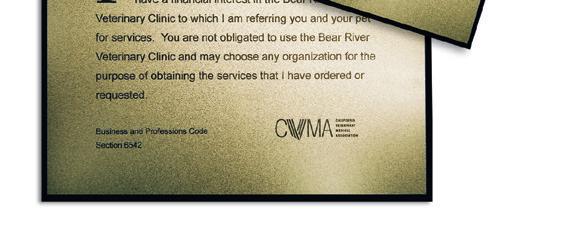
2020 EMPLOYEE POSTING SET
Businesses can incur heavy fines for not posting the proper notices in the workplace. The CVMA o ers this updated employee posting consisting of two laminated posters.
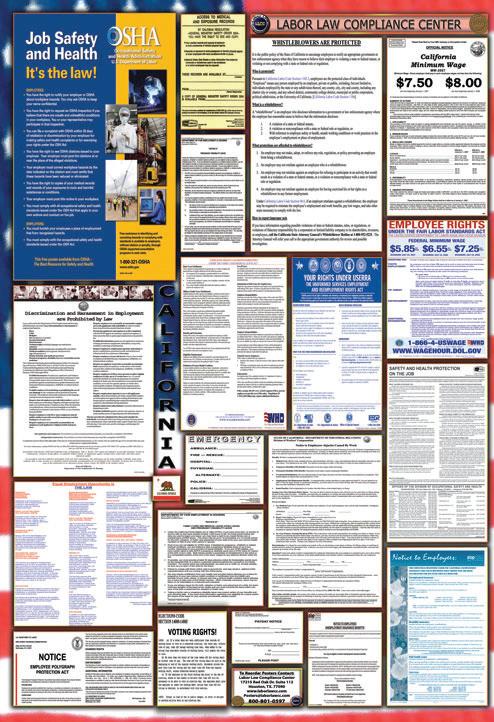
• Cal/OSHA – Safety and Health Protection
• State and Federal Minimum Wage
• Pay Day Notice
• DFEH Pregnancy Disability Leave Notice
• Wage Order #5
• Paid Sick Leave Notice
• Family Medical Leave Act
• Time O : Voting, Child Care, School Events
• Workers’ Compensation Notice/If You Get Hurt
• Access to Medical and Exposure Records
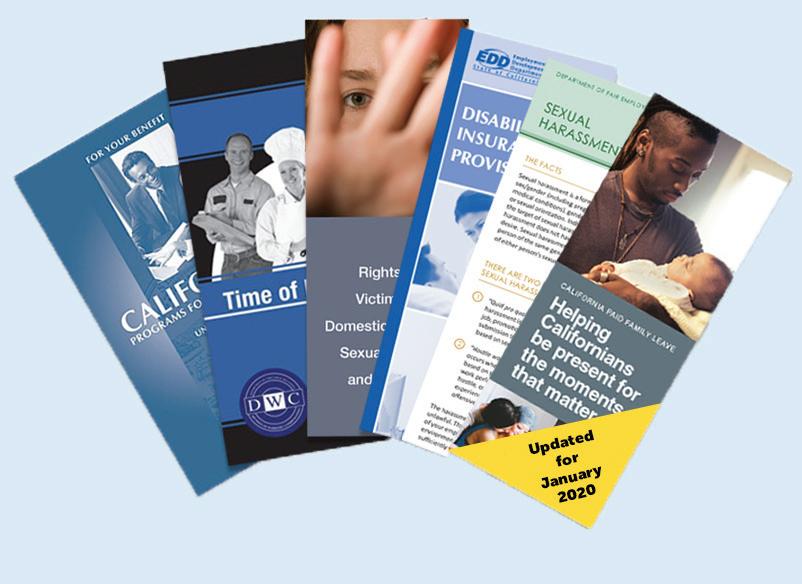
• Polygraph Protections
• Equal Employment Opportunity/GINA/USERRA
• EDD – Unemployment/Disability Insurance
• Harassment or Discrimination Notice
• Whistleblower Protection
• National Labor Relations Act Rules for Employees
• Employee Special Notices
Local Ordinances Special posting required for practices in select cities. Contact the CVMA for more information at 800.655.2862 or sta @cvma.net.
REGULATORY PLAQUES
The CVMA o ers a series of 8¾” x 11¾” laminated plaques that are suitable for hanging in your practice and meet a number of regulatory requirements.
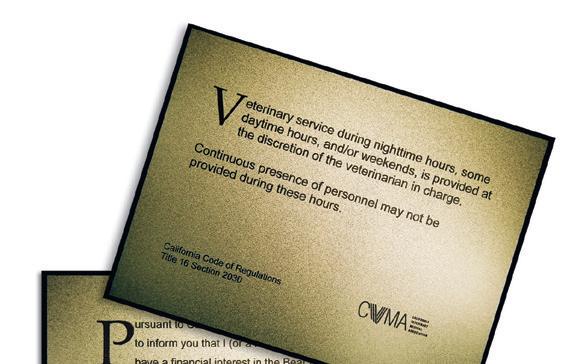
Required Postings
• Proposition 65 Warning (for practices with more than 10 employees)
• Continuous Presence Not Provided (required if animals will be left on the premises for any period of time without someone present)
• California Abandoned Animal Act (if you hospitalize/board animals)
• Financial Interest Disclosure (if applicable)
• Written Prescriptions (gives clients written notification that they have the right to receive a written prescription)
Not Required but Recommended
• Prescription Drug Dispensing (helpful in explaining restrictions to clients)
RADIATION COMPLIANCE KIT
The Radiation Compliance Kit is custom-designed to fulfill all of the regulatory requirements for veterinary practices. It includes required postings, the “Caution X-Ray” sign, radiation safety training materials, and detailed instructions on how to implement a radiation compliance program.
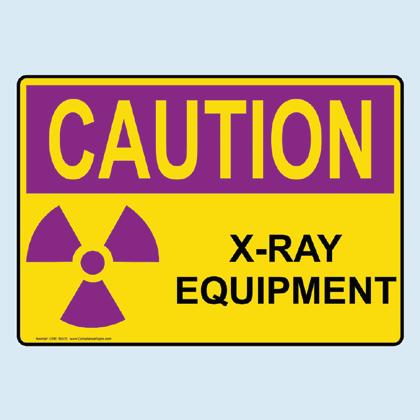
MANDATORY PAMPHLETS FOR EMPLOYEES
Various regulatory agencies require that every employee be given several pamphlets at the time of hire. It is recommended that employers provide the pamphlets to all current employees if they did not receive them at the time of hire.
California Veterinarian • September–October 2020 cvma.net 28
EXCLUSIVE MEMBER BENEFIT!
Purchase your CVMA Guide to Cal/OSHA Compliance subscription today!
The CVMA Guide to Cal/OSHA Compliance is an online tool created specifically to help California veterinary practices with Cal/OSHA compliance. It includes educational materials, required forms, training templates, implementation and recordkeeping resources, and a step-by-step wizard that simplifies the process of creating a customized written safety plan for your practice. Each section has clear instructions and a logical progression which results in a safety program catered to each individual subscriber.
CAL/OSHA Requires Employers to Provide COVID-19
Worker Protection
In response to the coronavirus pandemic, the California Department of Industrial Relations Division of Occupational Safety and Health (Cal/OSHA) issued guidance on protecting workers from COVID-19. As part of COVID-19 protection, Cal/OSHA requires employers to update their workplace Illness and Injury Prevention Programs (IIPP) policies.The CVMA Guide to Cal/OSHA Compliance has recently been updated to include the required COVID-19 component.
The CVMA Guide to Cal/OSHA Compliance is available only to CVMA members. The online subscription-only guide can be accessed and updated at anytime.
For more information or to renew your subscription visit cvma-inline.net/regulatory-guide, call the CVMA at 800.655.2862 or email sta @cvma.net.
LIMITED TIMEOFFER
The CVMA is offering a promotional rate of $223 for new subscriptions until October 31.
4 EASY WAYS TO ORDER
• CVMA.NET shop online – cvma.net/products.
• CALL 800.655.2862 M–F between the hours of 8:30 AM and 5:00 PM.
• FAX completed form found at cvma.net/products to 916.646.9156.
• MAIL completed form found at cvma.net/products to 1400 River Park Dr., Ste. 100, Sacramento, CA 95815.
The CVMA Guide to Cal/OSHA Compliance $279.00 Online only (no shipping fee or sales tax)
Renewal Rate
(prior to subscription expiration)
Ordinances (required for select cities) $18.00 $23.00 Call the CVMA o ce for more information.
• Prop. 65 Warning for Employees (CalEPA requirement)
• Continuous Presence Not Provided (VMB requirement)

• California Abandoned Animal Act (VMB requirement)
• Prescription Drug Dispensing – Prior exam required
• Written Prescriptions (VMB requirement)
•
Please allow up to 10 business days for the CVMA Guide to Cal/ OSHA Compliance order to be processed. You will then be able to view the guide online by clicking on the CVMA Guide to Cal/ OSHA Compliance link from the CVMA website home page after you log in. Please allow up to three weeks to receive the Employee Posting set, New Hire packets, plaques, and Radiation Compliance Kits. All returned items are subject to a 15% restocking fee. Shipping charges on returns are the customer’s responsibility. Credit will be issued only for returned items in original condition within 30 days.
29 View this issue of the California Veterinarian online at cvma.net/publications.
Annual
$119.00
Employee
$42.00 $57.00 Local
Regulatory
Posting Set
Plaques (per plaque) $41.00 $56.00
Financial Interest Disclosure Plaque $56.00 $71.00 New Hire Packets: Mandatory Pamphlets for Employees • 5-Employee set $55.00 $80.00 • 10-Employee set $110.00 $160.00 Radiation Compliance Kit $90.00 $130.00 Non–Compliance Products Members Members
$223.00 Member Veterinary Clinic Cal/OSHA Workplace Health & Safety Plan Member Veterinary Clinic 123 Anywhere Street Your City, CA 99999 000.000.0000
The CVMA Guide to Cal/OSHA Compliance has everything you need to assure your practice is compliance ready! It’s Easy, E cient, and Essential for every California veterinary practice.
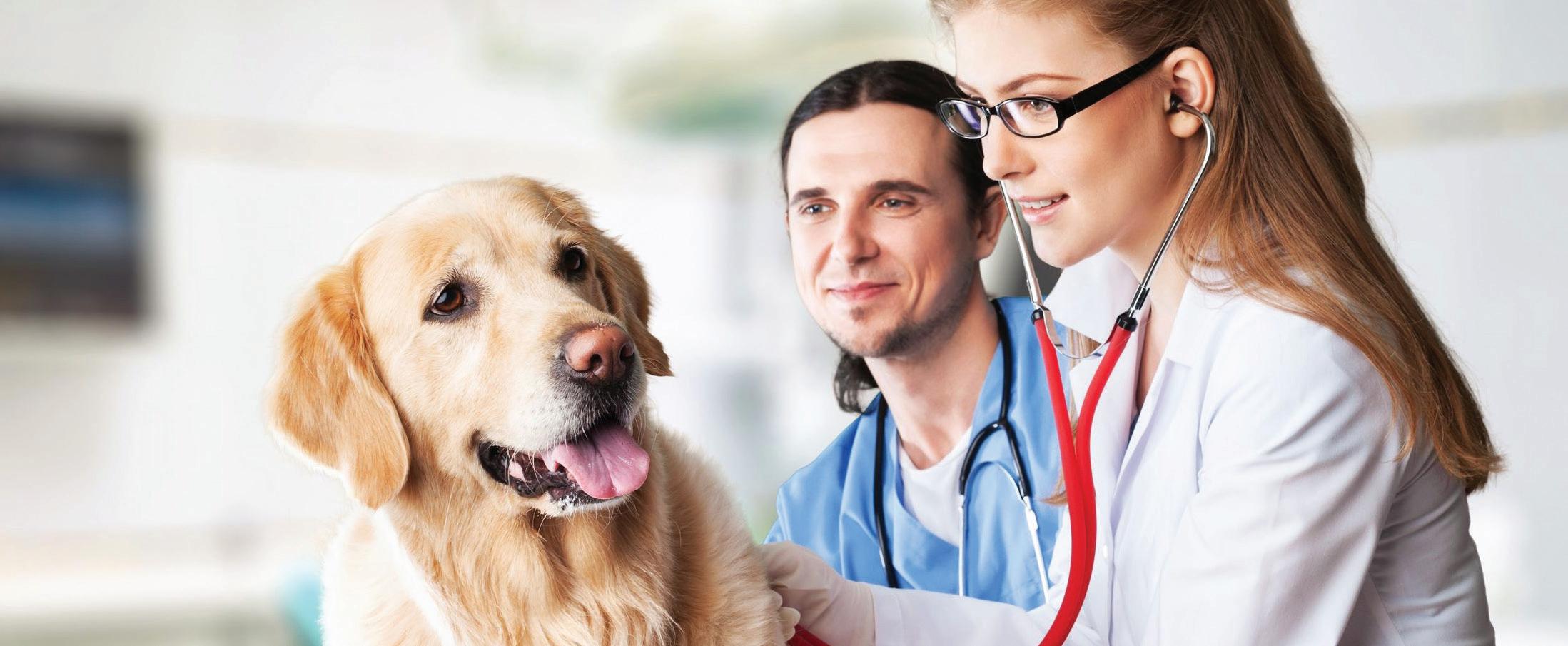
guidance on implementing your Cal/OSHA program.
EFFICIENT
The guide includes everything you need to maintain Cal/OSHA compliance all in one place! A customized written safety and health plan with policy statements, training information for designated safety coordinators, workplace inspection checklists and report forms, required posting information, employee training resources, and recordkeeping assistance.
ESSENTIAL
Cal/OSHA requires a current written plan and active ongoing health and safety program in every workplace. A Cal/OSHA inspector will ask to see your plan. Don’t leave yourself open to significant fines.
To order the CVMA Guide to Cal/OSHA Compliance, visit cvma-inline.net, email sta @cvma. net, or contact the CVMA at 800.655.2862.
30 California Veterinarian • September–October 2020 cvma.net REGULATORY COMPLIANCE PRACTICE SAFETY LEGAL ISSUES CVMA InLine is a dynamic workplace safety and compliance program designed to assist CVMA members with workplace safety, employment issues, and laws and regulations that a ect the veterinary profession. What is the CVMA InLine Program? In Line Veterinary Safety & Compliance Visit cvma-inline.net or call 800.655.2862.
– An interactive step-by-step process
written plan customized for
and
EASY
that creates a
your veterinary practice
–
–
Member Veterinary Clinic Cal/OSHA Workplace Health & Safety Plan Member Veterinary Clinic 123 Anywhere Street Your City, CA 99999 000.000.0000
Is your practice ready for a Cal/OSHA inspection? If not, you may be subject to citations and nes. In Line Veterinary Safety & Compliance
program is made possible by a grant from
This
Support the Power of the PAC
Even amid a pandemic, the legislature is considering bills that may directly a ect you, your patients, your right to practice, and the veterinary profession. For over 40 years, the CVMA Political Action Committee (CVMA-PAC) has ensured that the voices of California veterinarians are heard at the capitol.
We are in your corner fighting for you.
The CVMA-PAC, the bipartisan political voice for the CVMA, exists to elect, educate, and establish relationships with legislators. The CVMA-PAC:
Supports state legislators who are supportive of the veterinary profession.
Allows veterinary professionals to magnify their individual voices.
Helps the CVMA build relationships with legislators in their districts through grassroots outreach.
Provides a bipartisan means for the CVMA and our lobbyists to advocate for the veterinary profession and animals.
Developing a strong relationship with those in the state government who make important decisions regarding issues a ecting veterinary medicine and animal welfare is vital. The CVMA-PAC funds provide the bipartisan resources to establish and nurture these relationships through strategic contributions to legislators and candidates, and by sponsoring CVMA representatives to attend campaign events and fundraisers, which open the door for personal contact opportunities.
The CVMA-PAC is overseen by a board of veterinarians whose mission is to protect and serve the interests of CVMA members. The board is tasked with preserving the financial viability of the CVMA-PAC, approving all PAC expenditures, and establishing grassroots outreach methods in legislative districts.
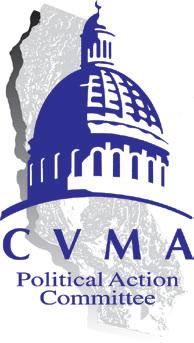
As a member of the community of California veterinarians, everyone has an important role to play in the political process. Whether it is through participation in grassroots e orts to connect with candidates and existing lawmakers, or by making a financial contribution to the CVMA-PAC, you are doing your part to safeguard the veterinary profession and the well-being of animals in California.
Thank You CVMA-PAC Supporters!
In the last issue of the California Veterinarian, we listed those who have contributed to the CVMA-PAC. We apologize to the following who contributed and were inadvertently left o the list:
Presidential Level ($1,000 and above)
Dr. Diane Craig
Dr. Marshall Scott
Governor Level ($500–$999)
Alameda County Veterinary Medical Association
Senator Level ($150–$499)
Dr. Anatjit Aulakh
Dr. Margaret Gamble
Dr. Frank Lavac, Jr.
Dr. Stephanie Sherman
Contribute to the CVMA-PAC Today!
It’s not too late to contribute. The stronger the PAC fund, the stronger our voice will be. Visit cvma.net and click on CVMA-PAC under the Government tab to learn more about the PAC and to contribute online. Corporate checks are allowed. Contributions to the CVMA-PAC are not tax-deductible as a charitable contribution for state or federal income purposes.
Checks should be made payable to: CVMA Political Action Committee, 1400 River Park Dr., Suite 100, Sacramento, CA 95815
Contribute ONLINE at cvma.net
31 View this issue of the California Veterinarian online at cvma.net/publications. CVMA-PAC
The 2020 CVMA Awards – Call for Nominations!
Do you know someone who has made a di erence? The CVMA would like to recognize their dedication and a great way to do that is with a CVMA Award. The awards are o ered in several categories and include veterinarians, registered veterinary technicians, organizations, and others who contribute to the veterinary community. We rely on the veterinary community who works alongside special people, organizations, and animals to provide us with nominations so that we can be sure to award those who are truly exceptional.
The deadline for nominations is December 31, 2020. Award recipients are recognized in the May/June issue of California Veterinarian. Nominate a colleague today!
CVMA Award Categories
Lifetime Achievement
This is the most prestigious CVMA award recognizing a member of the CVMA who has contributed to the advancement of veterinary medicine and organized veterinary medicine. Veterinarians who have exerted outstanding leadership in the building of a strong local and/or state association and who have contributed significantly to veterinary medicine in California and the California Veterinary Medical Association are honored. Nominator may be any individual, committee, or organization.
Distinguished Life Membership
Distinguished Life Membership is the CVMA’s highest membership honor, and is awarded to an individual who has significantly exceeded obligations through active participation in CVMA leadership. Nominee must be a CVMA member for 25+ years.
California
Animal Hall of Fame
Animals receiving this award exemplify the a ection, loyalty, security, and value of the human bond through unselfish and courageous accomplishments. The living animal must reside in California.
Outstanding RVT of the Year in Private Practice
This award honors RVTs that possess outstanding professional ability including his/her educational achievements, individual contributions, professional a liations, and special experience that sets them apart from others. Nominee and nominator must be CVMA members.
Linda Markland RVT of the Year in Non-Private Practice
In 2012, this award was renamed to honor Linda Markland, who exemplifies this award. The award recognizes RVTs that possess outstanding professional
ability including his/her educational achievements, individual contributions, professional a liations, and special experience that sets them apart from others. Nominee and nominator must be CVMA members.
RVT’s Outstanding DVM of the Year in California
This honor is awarded to a progressive veterinarian who utilizes his/her RVTs and sta to their fullest potential and distinguishes the importance of an educated, certified professional technical sta . Nominee and nominator must be CVMA members.
Meritorious Service Award
Nominee can be an individual giving special attention to or promoting the human-animal bond; a special program or service o ered by an organization that received media attention; or media/publication that demonstrated a commitment to coverage of veterinary or human-animal bond related stories. Nominee must be based in California. Nominations will be accepted from veterinarians, humane societies, SPCAs or other animal care agencies in California, or constituent veterinary medical associations.
Outstanding Service Award
This award honors those that have been excellent representatives of the profession through active community involvement and/or veterinary service. This includes involvement in veterinary and/or non-veterinary groups and associations. The nominee must be a CVMA member for the past 10 years.
Send in a nomination today!
Additional descriptions of each award, nominating criteria, and convenient forms are available at cvma.net. You may also contact Georgia Ashley at the CVMA by calling 800.655.2862 or via email at gashley@cvma.net for more information and nomination forms.
32 California Veterinarian • September–October 2020 cvma.net
Note: The Dan Evans Memorial Award has been retired. We would like to thank all the past award recipients for their significant contributions to the field of equine veterinary medicine.
BECOME A CVMA CERTIFIED VETERINARY ASSISTANT

The CVMA CVA program will increase your proficiency when working with veterinarians and RVTs as part of the patient care team. The program combines 600 hours of on-the-job training with online educational materials. Acquire skills in:
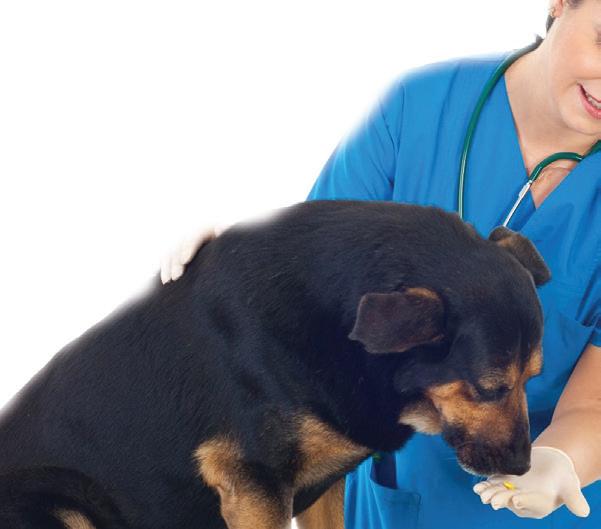
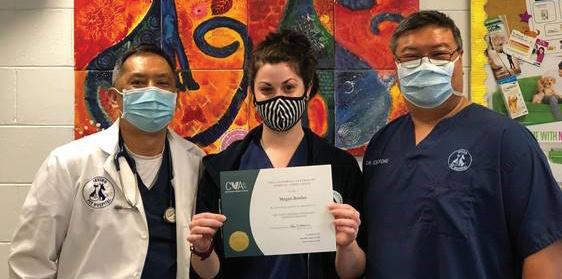
Caring for animals
Client communication
Practice safety
Medical terminology

Breed identification
Giving medications
Proper lifting and restraining techniques
How to safely handle chemicals
rowing up on a farm and having a grandfather as a veterinarian, I knew I always wanted to end up in the animal field as far as a career goes. I was around animals constantly and I had a huge passion for them. When I got my first veterinary job at Irving Pet Hospital, I was beyond excited! I started off as front desk and then made my way to the back to start treatment. As soon as I got some experience under my belt, Dr. Fong asked if I would like to get certified as a veterinary assistant. I was so thankful and jumped at the opportunity that was presented to me. I worked hard through the program and had plenty of study nights with my mentor Dr. Tumang. When I passed the program, it was such an accomplishment. This program has made me discovered new goals that I would like to achieve. It also has made me want to continue my learning and become a registered veterinary technician. I would love to learn all I can to further my career in this field, and this program was just the stepping-stone to achieving that.“
Megan Bowles
CVMA Certified Veterinary Assistant Irving Pet Hospital
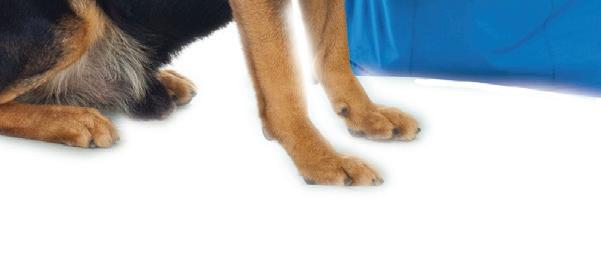
“G33 View this issue of the California Veterinarian online at cvma.net/publications.
For more information, call Laura Phillips at the CVMA at 800.655.2862 or go to the CVA page at cvma.net.
Photo: Left to right: Dr. Joseph Tumang, Megan Bowles, CVA, and Dr. Joe Fong
Meet a New CVMA CVA
The Two Paths to Medicare
By
by Matt Smith, CLCS; Veterinary Insurance Services Company (VISC)
In this article we will cover enrollment periods and the two ways to get your Medicare coverage—one being Original Medicare, and the other being Medicare Advantage. The diagram below outlines the two different ways you can go about choosing your coverage.
STEP 1: Decide how you want to get your coverage.
ORIGINAL MEDICARE OR
MEDICARE ADVANTAGE PLAN
Part C (similar to an HMO or PPO)
Combines Part A, Part B, and usually Part D.
STEP 2: Prescription drug coverage.
Prescription Drug Coverage
STEP 3: Decide if you need to add supplemental coverage.
Medicare Supplemental Insurance (Medigap) policy
Medicare (Medigap) Policy
Prescription Drug Coverage (Most Medicare Advantage Plans cover prescription drugs. You may be able to add drug coverage in some plan types if not already included.)
If you join a Medicare Advantage Plan, you cannot use and cannot be sold a Medicare Supplemental Insurance.
A Medicare Supplement Insurance policy (also called Medigap) is the last piece of the puzzle for the Original Medicare path. If you stay with Original Medicare, you may purchase a Medigap policy from a private insurance company to pay the portion of costs that Medicare does not cover (such as copayments, coinsurance, and deductibles). In other words, the Medicare Supplement or Medigap policy fills the gaps or supplements that Medicare does not fully cover.
Medicare supplement plans are identified by a letter. This is where it can get a little confusing. The Medigap plans currently offered are Plan A, B, D, high deductible F, G, K, L, M, and N. Plan A and B are not the same as Original Medicare, Plan C is not a Medicare Advantage Plan in this case, and Plan D is not for your medication coverage. There are four parts to Medicare (A, B, C, and D) and
34 California Veterinarian • September–October 2020 cvma.net
START
Part A Hospital Insurance
Part D Part B Medical Insurance
Part C Part D
END
END
these are the Medicare Supplement plans. The Medicare Supplement plans are all standardized as well, making them the same specific benefits from company to company. The differences in insurance companies when comparing Medicare Supplement plans are the price and customer service. (Reference: 2020 Choosing a Medigap Policy)
Visit medicare.gov/supplements-other-insurance/how-tocompare-medigap-policies for more information. Please see chart above for the benefits of the different Medigap plans.
Medicare Advantage Path
The Medicare Advantage path (like an HMO or PPO), is another way to get your Medicare coverage. These plans are subsidized by Medicare and in return they provide all your Medicare related insurance coverage in one plan, usually including prescription drug coverage. Because of this subsidy, you usually pay a lower monthly payment than you do with the Original Medicare path. Medicare Advantage Plans, sometimes called Part C or MA Plans, are offered by private companies approved by Medicare and are
not standardized. Since these plans are run by private insurance companies and are not standardized, each plan is different. But since these companies have a contract with Medicare, there are only a handful of choices in the area you reside, making it a little easier to decide. (Reference: Medicare and you 2020) Visit medicare.gov/medicare-and-you for more information.
When to Enroll
For people coming into Medicare, knowing when to sign up or when to switch your Medicare Supplement Plan, Medicare Advantage Plan, or medication coverage is an important part of the process. Keep in mind you must be signed up with both Part A and Part B of Medicare to be enrolled in a Medicare Supplement or Medicare Advantage Plan. You can sign up for a Medicare Supplement or Medicare Advantage during your initial enrollment period during the seven-month period that begins three months before the month you turn 65, and ends three months after
* Plans F and G also offer a high-deductible plan in some states. With this option, you must pay for Medicare-covered costs (coinsurance, copayments, and deductibles) up to the deductible amount of $2,340 in 2020 before your policy pays anything. (Plans C and F are not available to people who are newly eligible for Medicare on or after January 1, 2020.)
** For Plans K and L, after you meet your out-of-pocket yearly limit and your yearly Part B deductible ($2,110 in 2013), the Medigap plan pays 100 percent of covered services for the rest of the calendar year.
***Plan N pays 100 percent of the Part B coinsurance, except for a copayment of up to $20 for some office visits and up to a $50 copayment for emergency room visits that do not result in an inpatient admission
continued on page 36
35 View this issue of the California Veterinarian online at cvma.net/publications.
Benefits A B C D F* G K L M N Medicare Part A coinsurance and hospital costs (up to an additional 365 days after Medicare benefits are used) 100% 100% 100% 100% 100% 100% 100% 100% 100% 100% Medicare Part B coinsurance or copayment 100% 100% 100% 100% 100% 100% 50% 75% 100% 100% *** Blood (first 3 pints) 100% 100% 100% 100% 100% 100% 50% 75% 100% 100% Part A hospice care coinsurance or copayment 100% 100% 100% 100% 100% 100% 50% 75% 100% 100% Skilled nursing facility care coinsurance 100% 100% 100% 100% 50% 75% 100% 100% Medicare Part A deductible 100% 100% 100% 100% 100% 50% 75% 50% 100% Medicare Part B deductible 100% 100% Medicare Part B excess charges 100% 100% Foreign travel emergency (up to plan limits) 80% 80% 80% 80% 80% 80% $5,880 $2,940
Medicare Supplement Insurance (Medigap) Plans
Out-of- pocket limit in 2020**
Veterinary Medical Board Update
The California Veterinary Medical Board (VMB) and its Multidisciplinary Advisory Committee (MDC) met on July 23–24, 2020 by teleconference. In addition, the VMB held a special online hearing on August 13, 2020 to hear public comment on proposed regulations for animal physical rehabilitation. The CVMA Executive Director Valerie Fenstermaker and Director of Regulatory Affairs Dr. Grant Miller attended the meetings to represent members and the profession by providing comments on meeting agenda items. The following is a summary of items discussed during the meetings.
MDC Meeting
Kristi Pawlowski, RVT was elected as the new chair of the MDC and Dr. Kevin Lazarcheff was elected as the vice-chair.
The MDC discussed a tiered premises permit fee structure that would offset the high cost of RVT licensing fees to provide some relief to RVTs after the recent emergency fee increase. The committee voted to send proposed regulations to the VMB for consideration.
VMB Meeting
At the July 23–24 meeting, the VMB voted on the following:
• To appoint Dr. Jamie Peyton to the MDC.
• To re-appoint Ms. Leah Shufelt, RVT to the MDC.
• Approve the following regulatory packages to move forward in the rulemaking process:
Title 16, section 2036: Animal Health Care Tasks for RVTs. This proposal adds compounding to the list of “RVT-only” permissible tasks and changes veterinarian supervision requirements for RVTs applying casts and splints.
Title 16, section 2068.5: RVT Practical Experience and Education as Equivalent Curriculum. This proposed set of regulatory changes addresses eligibility windows in which RVT candidates may qualify for licensure by an alternate route program.
Title 16, Section 2010: Application After Failing an Exam. This clarification closes a loophole to require applicants who fail an exam to have to reapply and pay for another exam.
Title 16, Section 2068.7: Limited Term RVT Examination Eligibility Window. This regulatory proposal would repeal section 2068.7 from the Veterinary Medicine Practice Act, which is a non-substantive change to clean up this section because it relates to the RVT State Board Examination, which is no longer a requirement for RVT certification.
Animal Physical Rehabilitation Public Hearing
At the public hearing for animal physical rehabilitation (APR) on August 13, the VMB heard numerous public comments both in support and in opposition to the current proposed regulatory package which will formally regulate human physical therapists who perform APR. The CVMA supports the current regulatory package because it requires that a veterinarian establish a valid veterinarianclient-patient relationship prior to directing treatment and that the veterinarian have direct supervision of veterinary assistants who perform APR. The VMB debated the subject extensively but tabled further discussion until their October meeting so that the staff could respond to all written comments from the public.
The Two Paths to Medicare Continued from page 35
the month you turn 65 with no health question. This means they cannot deny you based on your pre-existing health conditions during your initial enrollment period at age 65. The next and most common time to change your health coverage is during the Open Enrollment Period. This takes place from October 15 to December 7. During this time you can change or switch your Medicare Advantage or Part D prescription drug coverage for an effective date of January 1. The Open Enrollment Period is always a good time to review your current coverage and new options for the upcoming year. (Reference: Medicare and you 2020) Visit medicare.gov/medicare-and-you for more information.
Deciphering what insurance plan is right for you is a very important, and at times a very confusing task. You are not alone! If you have questions, please feel free to contact Matt Smith, your local representative for the CVMA’s insurance brokerage, VISC, at (916) 921.2260 or Medicare at 1.800.633.4227, Medicare.gov.
36 California Veterinarian • September–October 2020 cvma.net
Creating a Thriving Dentistry Department
by Vickie Byard, CVT, VTS (Dentistry), CVJ By
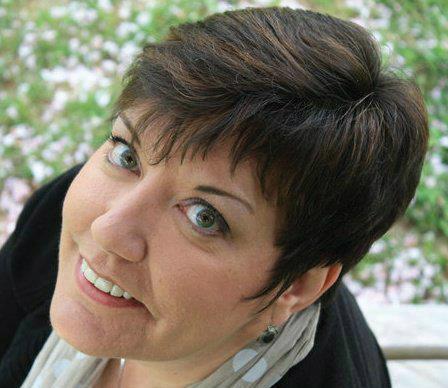
An AAHA client compliance survey revealed that the responsibility for the failure of owners to provide dental services for their pets lay with the person responsible for giving the recommendation. It is the practice’s responsibility to make sure they hear and understand its importance. The survey showed that either they did not receive a recommendation for dentistry, they did not understand the importance, they forgot the recommendation, or their veterinarian did not follow up. That means that each of these issues must be addressed to increase compliance.
All sta members need to be on the same page as far as dentistry is concerned. This means that everyone from the receptionist to the practice administrator must understand their role and “buy in” to the importance of this care.
The result of recent research demonstrates the association among inflammatory periodontal disease and cardiovascular disease, respiratory disease, liver disease, kidney disease, and joint disease. When the mouth is cared for, the vital organs are subsequently cared for as well.
Animals live with fractured teeth, multiple tooth root abscesses, oral ulcerations, and more. However, because they do not stop eating or become noticeably lethargic, many clients do not perceive that the pets are uncomfortable. Experience shows that most clients notice a positive change in behavior after appropriate dentistry is provided.
Technicians should be trained to “flip the lip” every time they examine a pet. Veterinarians should discuss the oral status and make appropriate notations in the medical record. When a recommendation is made by the veterinarian that dentistry should be provided, reminder cards can be generated by most veterinary software packages.
Clients should begin to expect a report about their pets’ oral condition as much as they expect vaccines. The clients will come to expect this when the practice is consistently providing the same message time and time again.
Some practices create photo albums filled with before and after photographs. Practice websites can have articles and case presentations stressing positive outcomes.
After expensive dentistry procedures, technicians experience clients lamenting that “if they had only known,” they would never have let their beloved pet’s mouth get
so bad. Your practice could provide monthly seminars on dentistry to give clients the critical information required to maintain their pet’s oral health.
As stated above, cost is a barrier, but more prevalent is the fear of anesthesia. Your practice can create a PowerPoint presentation to explain how to minimize anesthetic risk to the patient and how you do that. It can include the following information and actions: physical examination prior to anesthesia, tailored anesthetic drug protocols for each patient, and monitoring (show clients photos of pulse oximeter, ECG, blood pressure monitor, Bare Hugger, IV fluids, IV fluid pump)
The presentation can also walk the client through some clinical cases. Use clinical photos that look normal but show the radiographs that prove otherwise. These cases provide the opportunity to discuss the following: di erent grades of dental disease, resorptive lesions, periodontal disease, fractured teeth, malocclusions, tooth crowding, retained deciduous teeth, dentigerous cysts, gingival hyperplasia, chronic ulcerative paradental syndrome, stomatitis, and others.
You can also discuss the following: Tooth brushing, dental diets, Veterinary Oral Health Council acceptance, sealants, water additives, and appropriate chew toys.
These are some ideas of how to incorporate communication and marketing strategies into your practice to treat diseases that are frequently encountered. The benefits to patients are better overall health and a dramatic decrease in undisclosed pain.
The benefits to the practice are multifold. They create a lucrative profit center that can increase practice revenue and provide important health benefits for its patients.
Ms. Byard worked at Rau Animal Hospital in Glenside, PA since 1985. She is a charter member of the Academy of Veterinary Dental Technicians. She is the founder and a frequent blogger for PetED™ Veterinary Education and Training Resources. In February 2019, Ms. Byard joined the team at Veterinary Dentistry Specialists in Chadds Ford, PA.
RVT News
37 View this issue of the California Veterinarian online at cvma.net/publications
Vickie Byard, CVT, VTS (Dentistry), CVJ
2020 has been a great year for practice sales. Buyers are numerous, practices are in short supply, and loan interest rates are great. We have handled all sizes of practices this year from single doctor practices to multi-million dollar, multidoctor practices. Whether you’re considering a sale to a private party or to a corporate consolidator give us a call. We’ve handled both over the past year and a lot has changed in the past few months.
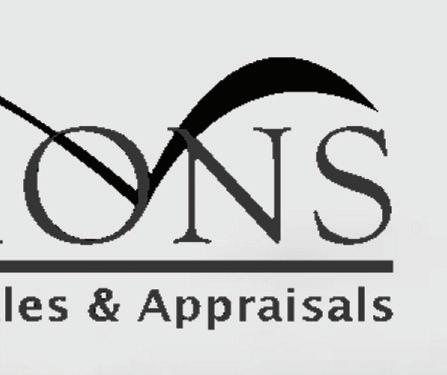



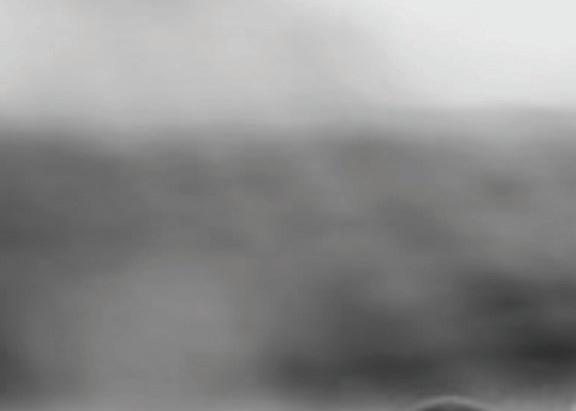


Don’ t put off retirement any longer. Call today and let us start planning the next phase of your life.
For those looking to start growing, see available listings at www.Simmonsinc.com
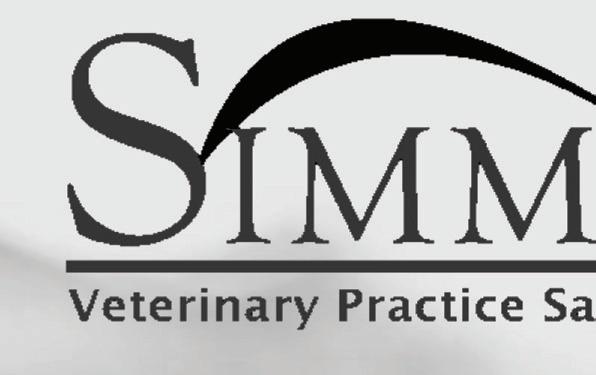

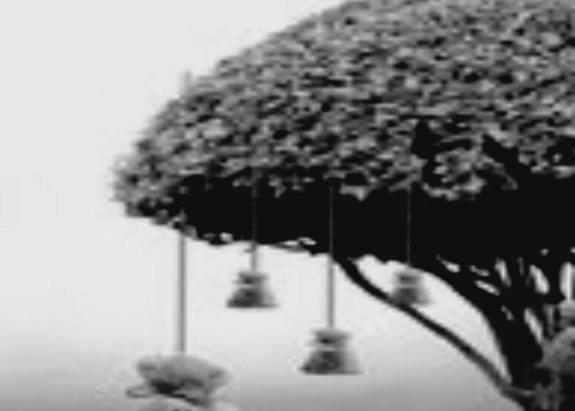
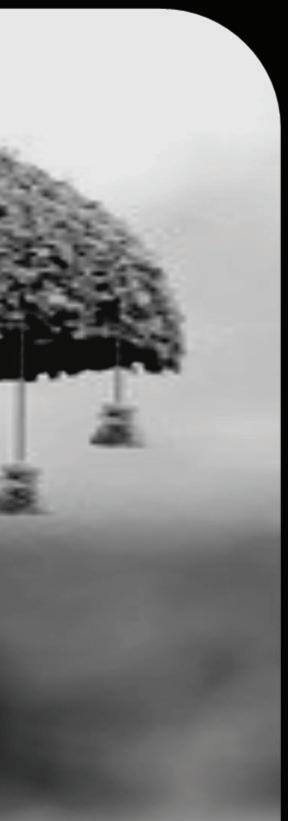
Byron Farquer, DVM, CVA pacific@simmonsinc.com Dardalee Bussell, DVM (209) 845 2088
Welcome Class of 2024!
Like many students in the country, the freshmen veterinary students from UC Davis and WesternU had to adapt to online learning and virtual activities.
While the CVMA could not welcome the students in-person, both schools invited CVMA representatives to introduce the students to the CVMA and its insurance brokerage, the Veterinary Insurance Services Company (VISC) via a Zoom presentation. CVMA Director of Regulatory A airs Dr. Grant Miller gave a PowerPoint presentation with an overview of the CVMA and encouraged students to get involved in the association with committees and events, and to take advantage of the CVMA’s scholarship and internship opportunities. He spoke about how the CVMA monitors legislation concerning the veterinary community and works to represent the profession in legal matters. Dr. Miller also discussed the many benefits the CVMA o ers such as discounts on insurance coverage and CE such as the Pacific Veterinary Conference, the CVMA Fall and Spring Seminars, and online seminars.
Ms. Kathy Noe from the CVMA’s insurance brokerage, the Veterinary Insurance Services Company (VISC), greeted the students and provided information about the professional
and personal coverages VISC o ers including professional liability, auto, renters, and homeowners coverages.
The WesternU presentation took place on August 4 and the UC Davis presentation occured on August 12.
UC Davis White Coat Ceremony Goes Virtual
The UC Davis White Coat Ceremony took place on August 16. During this online event, CVMA President Dr. Dirk Yelinek welcomed the students and challenged them to keep an open mind when it came to their studies because they may fi nd interest in a di erent career specialty.
“On behalf of the CVMA, I want to welcome all of you to the veterinary profession. A profession often described as the best of all professions, and it’s true. As a veterinarian, you will have many opportunities available to you but most importantnly, you will be able to improve the quality of life for animals and people.”
— Dr. Dirk Yelinek, CVMA President
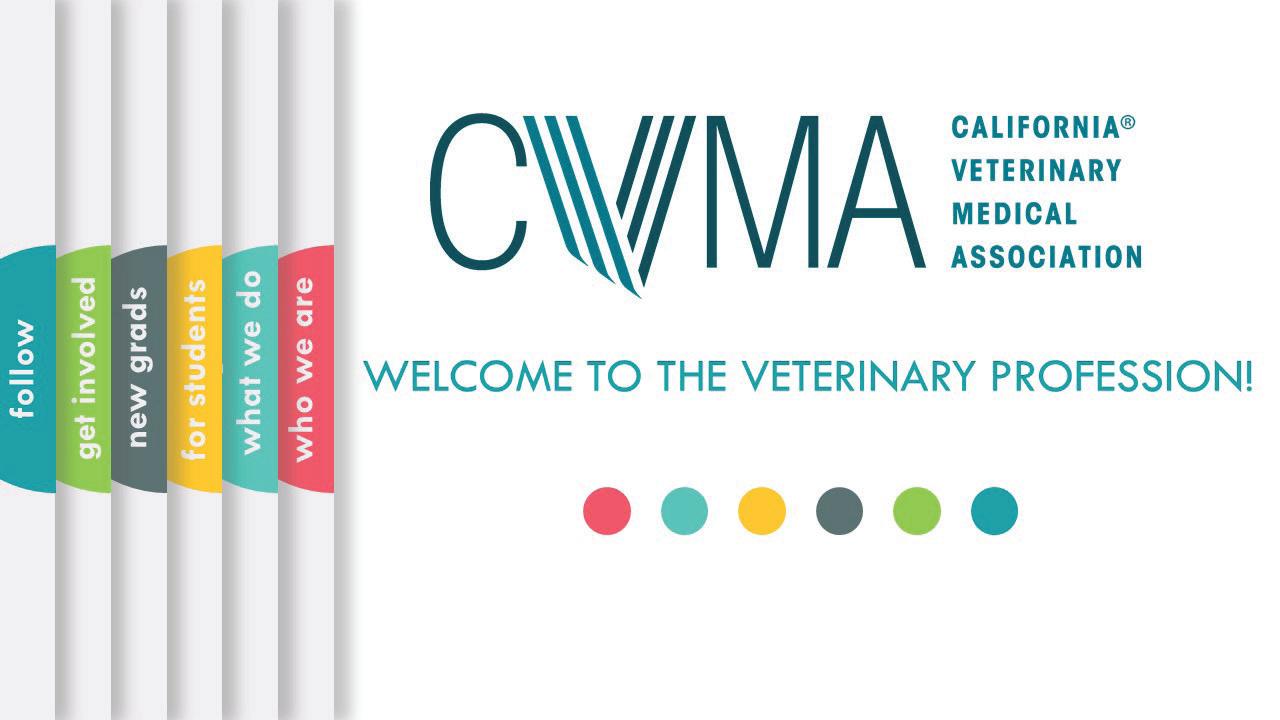
Student News 39 View this issue of the California Veterinarian online at cvma.net/publications
WesternU Student Summer Research Grows Despite Pandemic Challenges
Summer research projects by students have been a growing tradition at Western University of Health Sciences’ College of Veterinary Medicine for a decade. Like other established educational programs, however, summer research this year required new protocols to meet the requirements of the quarantine era.
WesternU student projects were altered for safety reasons, and often moved to locations beyond the campus boundaries in Pomona. But the work continued. Indeed, the summer program expanded, even under these unusual circumstances.
Thirty-three students were involved in summer research in 2020, up from 27 last year and 21 in 2018. The summer research tradition was launched in 2010. Dominique Gri on, DVM, Ph.D., DECVS, DACVS, WesternU’s Assistant Dean for Research, oversees the summer program.
This year’s projects ran the gamut from determining sub-clinical e ects of lead exposure on southern turkey vultures, to studying the influence of COVID-19 on access to care for cats and dogs. Three anesthesia-related research projects were tackled as part of the college’s Applied Physiology and Clinical Pharmacology Laboratory (APCPL). They involved ferrets, cats and dogs, managed by WesternU students Carina Cortez (third year, DVM 2022), Kailynne Atkinson (third year, DVM 2022), and Heidi Luczynski (second year, DVM 2023). Faculty members Dr. Lyon Lee and Dr. Young Joo Kim served as principal investigators, assisting the students in their work.
With much of the WesternU campus under quarantine due to the pandemic, the three research projects moved o campus in June. The lab migrated to the Central Orange County Emergency Animal Hospital in Newport Beach, owned by Dr. Kim.
The student projects were designed to study species-specific protocols that allow for safe anesthesia outside normal hospital settings.
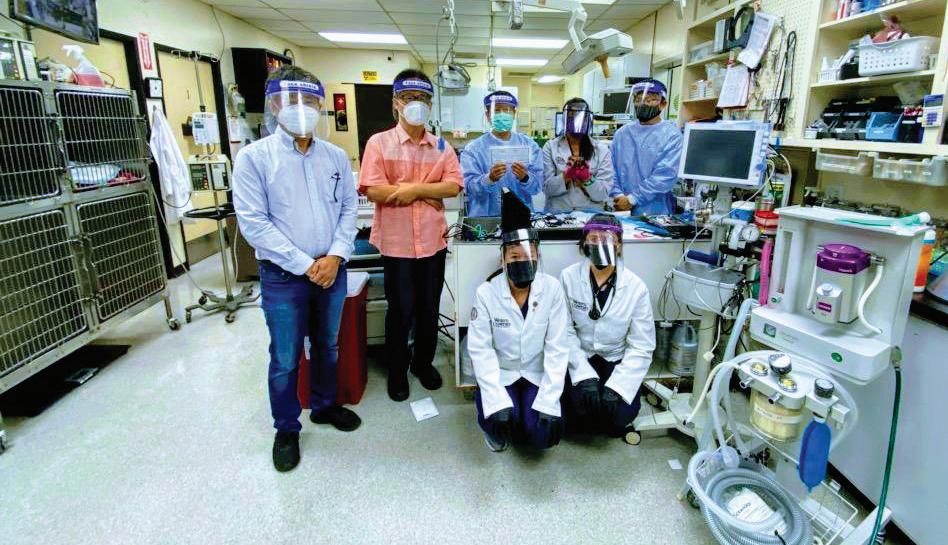
Ms. Luczynski noted that using anesthesia via injection could be used in shelter medicine or in relief work overseas. “Our research is also helping
us build our teamwork and networking skills,” she added.
The APCPL projects received a grant that helped strengthen the work. Bionet, an international manufacturer of bio-signal medical equipment, provided $8,000 in financial research support for summer research scholar anesthesia projects. The company also furnished a variety of equipment to assist the program. The added funding allowed the lab to set up a clinical trial laboratory at the ocampus site.
Dr. Lee and Dr. Kim worked with Bionet to attract the critical financial support. In addition, Bionet contributed state-of-the-art anesthesia monitoring equipment to the project in exchange for clinical evaluation of the devices, providing additional backing for the research.
Equipment donated for clinical evaluation include a BM7 Veterinary Patient Monitor, an anesthesia machine, glucometer, SonoQue wireless US image device, and a Vemo wireless ECG Patch monitoring system.
Dr. Lee praised the support provided by Bionet, noting the “industry cooperation is extraordinarily important” to WesternU’s research agenda.
Standing, left to right: Minsoo Han, Principal Engineer/Research & Development (Bionet), Joon Hyun Lee, Director, Finance & Operations (Bionet), Dr. Lyon Lee, DVM, PhD, DACVAA (PI), Carina Cortez (summer research scholar), Dr. Young Joo Kim, DVM, MSc (PI). Second row, left to right: Kailynne Atkinson (summer research scholar), Heidi Luczynski, MSc (summer research scholar).
WesternU News
California Veterinarian • September–October 2020 cvma.net 40
State of the School at UC Davis
That degree of student support allows the school to decrease the debt load of its students. Earlier this year, the American Veterinary Medical Association (AVMA) released the 2019 Economic State of the Veterinary Profession. The guide includes data on veterinary schools, including information regarding the debt loads of recent DVM graduates.
With its leading educational experience and excellent financial outcomes, UC Davis is the best value in veterinary education. UC Davis showed the third-least median debt of the 30 veterinary schools reviewed and placed second for the most optimal debt-to-income ratio. UC Davis students also have the highest median starting salary of graduates, giving them better ability to pay down their educational loans.
Mitchell Ng, class of 2023, wanted to be a veterinarian from early childhood, but growing up in the city, most of his exposure was to small animals. That all changed when he came to UC Davis as an undergraduate majoring in animal science. Through those classes, he got his first in-depth exposure to cows and volunteered at the goat barn.
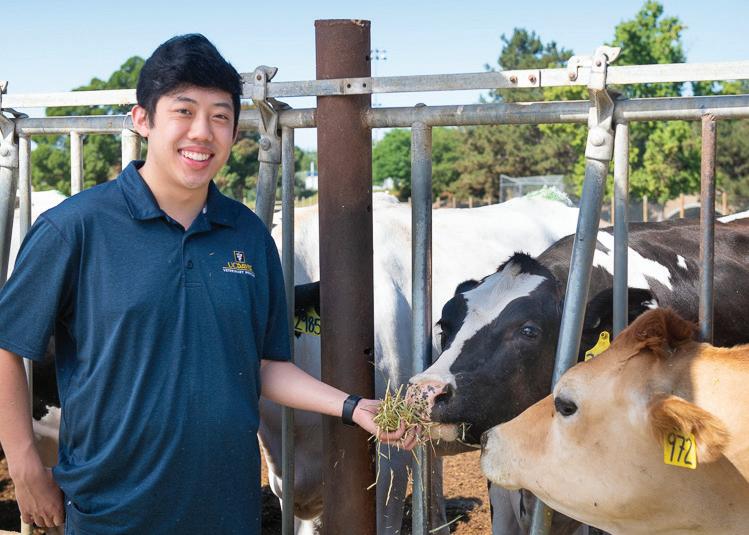
Those experiences helped redirect his career path when he entered veterinary school. Ng is now focused on public health and plans to work for the USDA Food Safety and Inspection Service, following up on an internship he had last summer.
In part, Ng’s choices have been made possible by scholarships, including an Admissions Recruitment Scholarship, which provided $30,000 in support across his four years of veterinary school.
“I’m so thankful to have the help. It goes a long way for all of us students who need the additional support,” Ng said. “Just knowing this puts a dent in my debt load relieves a bit of financial stress.”
Thanks to philanthropic support from generous donors, UC Davis veterinary students like Ng received approximately $2.7 million in scholarship funds in the past academic year. In addition, the school provides funds for fourth-year externships and other educational activities. In total, UC Davis provides approximately $7 million annually in financial assistance to its approximately 560 DVM students.
UC Davis uses a combination of return-to-aid and philanthropy to keep costs low for its veterinary students. Most students at minimum receive return-to-aid fee grants of approximately $7,000 per year plus $500 in a one-time computer technology grant which equates to approximately $28,500 over the course of four years. Resident tuition and fees are $32,102—so the school covers almost one year with return-to-aid alone without considering any donor-funded scholarships.
Graduates with lower debt have greater flexibility to:
• Pursue advanced scientific or clinical training, which leads to better patient care and scientific and medical breakthroughs.
• Pursue public service careers, which generally pay lower salaries than the private sector.
• Focus their professional work on the less common veterinary specialties or underserved geographic areas.
• Give back to the profession and provide leadership/ mentorship to address mental health issues in the veterinary community.
For Ng, the support has allowed him to continue working flexible hours at the Park Centre Animal Hospital in Alameda where he was employed as a vet tech before veterinary school.
“My experiences there reinforce what I learn in class and give me more hands-on opportunities,” Ng said. “I’ve also been able to volunteer with the Mercer Clinic for Pets of the Homeless and the Knights Landing One Health Clinic. I may not have been able to do that if I had to work more, so I’m grateful to each donor who supports students at UC Davis.”
UC Davis News
41 View this issue of the California Veterinarian online at cvma.net/publications.
Mitchell Ng, class of 2023, visits cows at the UC Davis dairy barn.
How to Place a Classi ed Ad
Place your ad in the Career Center at cvma.net. There are two options for classified advertising:
1. Online advertising
2. Online and in one issue of the California Veterinarian
Online only
*Price includes the first six lines of text. Each additional line is $10/$11 for non-members. A line consists of approximately 50 characters.
**If you wish to place a print ad only, contact Laura Phillips at 916.649.0599 or classifieds@cvma.net.
CVMA
Members NonMembers
30 days online $149 $199
60 days online $249 $299
90 days online $349 $399
Online and in one issue of the California Veterinarian
60 days online + one issue of the CaliforniaVeterinarian $299 $349
90 days online + one issue of the CaliforniaVeterinarian $399 $449
POST AN ANONYMOUS AD OR RESUME
Resume – Post a confidential resume. Go to cvma.net. Click on the Resources tab then Classifieds in the right menu to get started.
Ad – Place a confidential ad by creating an anonymous email address and using it when posting your ad.
POSITIONS OFFERED
NORTHERN CALIFORNIA
Veterinarians
If you have any questions, please contact customer service at 860.437.5700, clientserv@yourmembership.com, or classifieds@cvma.net.
DEADLINE DATES FOR AD SUBMISSIONS IN THE CALIFORNIA VETERINARIAN:
Issue
Deadline
Jan/Feb December 5
March/April February 5
May/June April 5
July/Aug June 5
Sept/Oct August 5
Nov/Dec October 5
If your ad is received after the deadline, it will go into the subsequent issue of California Veterinarian. After the deadline, the CVMA cannot alter or cancel ads. The CVMA reserves the right to edit copy and does not assume liability for contents of classified advertising. Prices subject to change without notice.
Locally owned 3-4 doctor full service, client-focused veterinary hospital in wine country. Enjoy what you do for a living and challenge yourself in a busy, supportive, family-owned hospital practicing surgery and medicine your way. Excellent support sta . Flexible schedule to allow you to spend time doing other things you love! Looking for the right personality more than the right skill set. Negotiable compensation with Health, Life Insurance, 401k, CE, Uniform, Vacation. Please email resume to admin@lodivethospital.com.
Looking for compassionate, friendly, and enthusiastic small animal veterinarian to work at a busy 2-doctor practice in beautiful South Lake Tahoe. Live and work in paradise! Soft tissue/orthopedic surgery, medicine, ultrasound, digital radiology, dentistry, and more. No required after-hours emergency. Commitment to our clients and patients an absolute must. Retirement benefits, no holidays. Flexible hours, base pay with production available. Email npowell@bluelakevet.com.
Classi ed Advertising California Veterinarian • September–October 2020 cvma.net 42
Are you interested in writing your own schedule, building a great client base and helping your clients in more ways than ever before? Having a TRUE belief in integrative medicine should drive you to want to treat animals with the best care. A true desire to try new methods for helping your clients thus bettering the lives of their human companions is key to your success as a veterinarian at Wise and Wonderful Integrative Veterinary Center. As a veterinarian at Wise and Wonderful Integrative Veterinary Center, the ONLY FEAR FREE integrative animal hospital in all of California, you will have an opportunity to become a member of a very exclusive team! We understand that with the right support team, you can become the veterinarian you were always meant to be. Located in beautiful Santa Rosa, amidst the grapes of wine country and only an hour from San Francisco, our Animal Center is one of a kind. We strive to keep a work/life balance and as such, we o er a competitive wage commensurate with experience along with many benefits which include: Health, Dental and Vision; Retirement Plan with up to 3% employer match; Paid vacation, PTO, Holidays; Recognition of longer work hours, with bonuses or additional time o as earned; Pet insurance stipend and discounted rates for personal pets; Opportunity to become a Partner in the practice; MORE!!! If you are ready for your rewarding next level of veterinary medicine, contact us right away. Openings for a position like this, with an opportunity to represent a one-of-a-kind veterinary practice are few and far between. Don’t miss your chance to become part of this amazing organization and apply today! We are waiting for you! Email drmartin@wiseandwonderful.vet.
Are you tired of being a Techinarian or boggled by charts? We are the practice for you! Davies Animal Medical HospitalLocated in Yuba City, CA is an easy commute from Sacramento or Chico. Yuba City was recently voted Top Ten Best Small Cities in the US and we are seeking a motivated, experienced full-time veterinarian to join a well-established (over 25 years), progressive small animal practice with a loyal fan base. Davies Animal Medical Hospital is a privately owned, 5-doctor practice that is growing quickly. We have a highly skilled, fun and collaborative sta with a high Sta to Doctor ratio. Ideal candidate would be a team player, supportive mentor, thrive in a fast-paced environment, competent in basic surgery/dentistry, provide high quality medicine for our patients and focused on creating a warm, family experience with clients. The hospital is a paperless and well equipped with state-of-the-art ultrasound (AUS and Echo), in-house IDEXX laboratory, both dental and conventional digital radiology and laser therapy. We aim to provide our team with a balanced work/home life. No on-call or after hour emergencies. Flexible work schedule of 4 days per week with rotating weekends to maximize your time o . Salary of $135-165k plus production bonus and competitive benefits (Health/Dental/Vision/Simple IRA/CE allowance/Dues/ Licenses). Signing bonus up to 25k! Email Manager@daviesanimalhospital.com.
We have a small, boutique practice in Laguna West (Less than 1 mile from I5, with easy access to Sacramento, and only 25 miles from Davis. We have been here over 20 years, and have been able to thrive in Elk Grove because of our reputation, not just for excellence, but for CARING about our clients and their pets. We all know what it’s like to work in huge hospitals, the chaos and the pressure. This is more of the individual style, family practice that is becoming harder and harder to find. You won’t be rushed with 15-minute appointments, and you’ll usually be able to go home in time. Our clients expect topquality medicine, and most can a ord your treatment plans. We have raving fans, and have been consistently rated in the top 5 veterinary hospitals in the entire Sacramento Valley (KCRA’s A-List.). You must have a valid California Veterinary license and a DEA license. You should be able to work independently (or if you are a newer graduate, we will mentor you). We are looking to grow and would love to talk to you, whether you are a relatively experienced or a newer graduate. Email kabyam@ yahoo.com. Job Type: Part-time or Full Time (Saturdays required) Pay: $500.00 - $1,000.00 per day Pro-Sal.
Come join our team in wonderful Fairfax and see why we love living and working in Marin! We are a growing and thriving, independent, family-owned veterinary practice located just 20 miles north of San Francisco. We care for dogs, cats, and exotics, and o er general wellness, medicine, surgery, dentistry, acupuncture, and are lucky to have excellent working relationships with multiple local specialists to o er more advanced care when needed. We want to help you find your niche in our practice. We are seeking a full or part time associate veterinarian who understands the importance of exceptional client service in obtaining good outcomes for our patients. We strive to provide top-notch medical and surgical services for our patients, excellent service to our customers, while maintaining an upbeat and enjoyable work environment. Convenient access to local specialists and emergency services allows us to always provide the very best care for our patients while maintaining work-life balance personally. Email resume and cover letter to apply to aaronwentzell@hotmail.com.
Classi ed Advertising 43 View this issue of the California Veterinarian online at cvma.net/publications.
Registered Veterinary Technicians
Come see why the Fairfax Veterinary Clinic is an awesome place to work! We are located in funky Fairfax just 20 miles north of San Francisco in gorgeous West Marin. Fairfax Veterinary Clinic is a fast-paced multi-doctor hospital that o ers complete care for small animals (including exotics). We focus on general veterinary medicine including wellness and preventive care, dentistry, internal medicine and surgery, and general dermatology, ophthalmology, oncology, etc. We routinely team up with local specialists in order to provide the highest level of care to our patients. Our sta is laid-back, but focused and we recognize the importance of working together as a team in order to provide exemplary care to our patients and clients. We need an RVT (a highly skilled and experienced assistant would be considered) to come and join our team. Full or parttime position available. Email resume and cover letter to apply. Email aaronwentzell@hotmail.com.
CENTRAL CALIFORNIA
Veterinarians
Experienced Veterinarian Wanted to join our fast-paced, well-established 10-doctor practice located in a rural community with a low cost of living. We are in the heart of the Central Valley; 2 hours west of Yosemite, 2 hours from San Francisco, and 2 hours from Napa. Our town o ers a vibrant nightlife with our restaurant row, boutique shopping, and is also a great place to raise a family with excellent schools and lovely parks and recreational activities. We desire a smart, enthusiastic, energetic, client-oriented veterinarian with strong internal medicine and surgical skills. Our hospital o ers state of the art equipment including digital radiography, new ultrasound machine, new endoscopy machine, hydrotherapy unit, digital dental radiology, laser therapy, and much more! We are a paper-light practice with digital records. We o er Canine Rehabilitation, Acupuncture, Orthopedic Surgeries, Soft-Tissue Surgeries, Emergency Care, and everything in between. Our support sta is phenomenal, two technicians per doctor plus designated support sta such as Leads, Dental Technicians, Pack Washers, etc. No Emergency Shifts. 24-32 scheduled hours a week, with a great work-life balance. Extremely Competitive Compensation Package, plus an additional $30,000 to $50,000 signing bonus DOE. Excellent Benefit Package includes: Health Insurance, Dental, Vision, 401K, CE, Licenses and Dues, Generous PTO, and Uniforms. Ownership Buy-in Potential available for the right Vet. Please email Sara Leimgruber, Hospital Administrator at sleimgruber@valleycrittercare.com to submit your CV.
SOUTHERN CALIFORNIA
Veterinarians
Central Coast California small animal veterinarian for potential 2-doctor practice in beautiful Santa Barbara County. No after-hours or emergencies. Experienced sta , flexible hours. Doctor - Owner getting ready to retire so buy-in opportunity. To apply, please send resume to Dr. Brian Hunt, Stfrancis8980@gmail.com or 805.735.8980.
La Jolla Veterinary Hospital is committed to the highest level of veterinary medicine and a distinct commitment to hospitality. We are a successful small animal practice in the beautiful community of La Jolla with an extraordinary reputation that has been in practice for over 70 years. We are committed to not only making an impact in the lives of our patients, but also, to our community and the animal welfare industry as a whole. We have a unique, sta -driven workflow that provides an environment in which our veterinarians can concentrate exclusively on patient care and strong client communication. We also value far more than veterinary medicine. We value our sta and our working environment to a degree that hosts a workplace that is both fun and drives a stellar work performance from the team as a whole. We are looking for a DVM to work three 10-hours shifts/week on Saturday, Sunday and a negotiable weekday.
Benefits include: Competitive salary/pay with paid time o ; Premium medical benefits; 401(k) Savings Plan with employer match; Continuing Education, licensing and professional membership reimbursement; Superior discounts for household pets; A variety of discounts through and with our Companion partners. Email steph@lajollavet.com.
Classi ed Advertising California Veterinarian • September–October 2020 cvma.net 44
Ellie Wattles, DVM, President, Broker
Beka Herrera, Vice President, Broker
Connie Burke, CPA, CVA, CM&AA
GREATER SACRAMENTO- Motivated Seller: This historic town is located just 30 minutes north of Sacramento within Placer County, paradise for outdoor enthusiasts, wine connoisseurs, foodies and history buffs alike. The practice is located on a major thoroughfare with excellent visibility and ample parking. Efficient ~1,900 sq. ft. free-standing facility. Computerized practice includes digital X-Ray and IDEXX lab 2019 Gross ~$798,000. Currently operated as a 1 DVM practice with great staff. Major practice price reduction. NEWPX PRICE: $400,000. REAL ESTATE PRICE: $420,000.
INLAND EMPIRE- Rare Opportunity: Located in the heart of southwest Riverside County and ~1.5 hours from L.A. & San Diego. This upscale community offers a rural feel w/ incredible amenities available. Amazing location to reside and work. PX is located in a popular shopping center w/ ample parking. ~2,800 sq. ft. hospital includes 3 exam rooms, & multiple runs/runs. Well-equipped PX w/ digital X-Ray & IDEXX lab. Under-utilized PX w/ limited DVM hours& services. Room for expansion & growth. 2019 Gross ~$1.3 Million. PX PRICE: $1 1 Million RE PRICE ONLY: $400,000
SANTA CRUZ COUNTY- New Listing: Situated in the heart of the Monterey Bay area, 84 miles south of San Francisco, less than 10 miles from the ocean, this friendly community offers an ideal environment for working and living. Although agriculture forms the economic base, technology, electronic companies, electrical products, construction materials and heavy construction companies support the economic structure. Spacious, freestanding ~3,744 square foot leased facility situated near a major thoroughfare. Long established, full-service, small animal hospital includes 3 exam rooms, 30 cages, 8 runs with DR- XRAY & IDEXX lab equipment. 2019 Gross just over $1.1 Million. P PRACTICE PRICE: $820, 000
ORANGE COUNTY, COASTAL- Priced to sell quickly: This charming community offers ideal weather, a diversified economy & excellent educational system. The city is located near three airports: (SNA), (LGB), & (LAX). PX is located in a newly renovated urban shopping center. Efficient leased facility ~ 1,200 sq. ft. w/ 2 exam rooms, 3 runs & several cages. 2019 Gross ~$554K produced w/eextremely limited, part time DVM hours. Significant growth potential with new energetic owner-operator. Currently, the PX values at greater than 1 year’s gross. P PX PRICE ONLY: $470,900
CONTRA COSTA COUNTY- New Listing: Easy access to San Francisco and Sacramento, this convenient, central location, along with a temperate climate, allows residents to enjoy a wide variety of unique and scenic attractions within the immediate Bay Area as well as throughout Northern California. Leased facility, ~2,000 sq. ft located in a shopping center with ample parking. Facility offers 2 exam rooms and 20 cages. Computerized practice includes DR X-RAY, Abaxis lab equipment. Many opportunities for growth with new energetic owner. P PRACTICE PRICE ONLY: $399,000
MENDOCINO COUNTY: Just 2 hours north of the San Francisco Bay Area & west of Sacramento. This area boasts spectacular scenery & distinctive wineries. Hundreds of miles of hiking trails, verdant hills & secluded lakes residents can easily find solitude & beauty. 1 part-time DVM PX. ~1,500 sq ft leasehold facility located in a small strip-center. 2019 Gross~ $396,000 produced with very limited hours. P PX PRICE ONLY: $120, 000
SANTA CRUZ COUNTY, Scotts Valley: Located about 6 miles north of the City of Santa Cruz & 26 miles southwest of San Jose. Well established PX situated within a strip center. Leasehold facility is ~ 1,800 sq. ft w/ 2 exam rooms & 15+ cages. Full service, computerized 1- DVM px. Equipment includes CR X-Ray & IDEXX lab. 2019 Gross ~$783,000. Very motivated seller due to health issues PRACTICE PRICE ONLY: $390,000
SAN DIEGO COUNTY, NORTH: Near perfect climate. Leisurely drive to beach cities and downtown San Diego. Endless outdoor activities, easy access to retail & commercial areas. ~1,895 sq. ft. leased facility. Full-service hospital w/ experienced staff. 2019 Gross ~$740,000 produced with limited DVM hours & services. Excellent opportunity for first time buyer or satellite practice. P PRICED FOR A QUICK SALE. PRACTICE PRICE ONLY: $365,000.
LOS ANGELES, COASTAL: MOTIVATED SELLER! Rare opportunity to own a well- established practice located in an excellent area. The city includes a state university, along with a harbor port, airport. ~1,100 sq.ft free-standing facility. Equipment includes Abaxis VS2 lab, dental unit, Digital DR X-Ray. 2019 net sales ~$556,000. P PRACTICE PRICE: $400,000 REAL ESTATE PRICE: $575, 000
Interest rates have dropped to historic levels. Contact us to learn how we can help achieve your goals of buying or selling!
545 Sespe Avenue Fillmore, CA 93015 Phone: 805.524.3195 Fax: 805.524.3192
E-mail: PacProInc@aol.com Website: www.pacificproinc.com
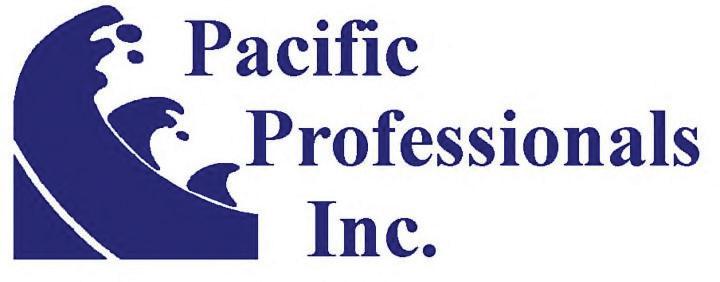
Brokers and Appraisers Practice and Real Estate Sales Transition Specialists Practice Appraisals
We are a small animal hospital located in Imperial, California in an area with a need for more veterinarians. We mostly see dogs and cats, but we also see birds and a small number of exotic animals. We do many spay and neuter procedures, which would give you plenty of opportunity to improve your surgical skills, and practice your veterinary knowledge while working with an experienced veterinarian and sta . New grads are welcome to apply. Health insurance stipend, CE stipend, and paid time o available. If interested direct any inquires to Craig Satow DVM, at desertdvm@aol.com.
CALIFORNIA
Veterinarians
VetRelief.com welcomes DOCTORS and HOSPITALS to team-up and conveniently match your employment expectations. HOSPITALS: create an account, then post your jobs which include job’s dates, shifts, and your project’s description. Relief veterinarians will bid on your jobs. DOCTORS and HOSPITALS: together, you may negotiate conveniently and securely via VetRelief’s web site to ensure a good match. There is no commitment until Doctor and Hospital agree. Learn more at https:// vetrelief.com, smarthire@vetrelief.com, call or text 949.899.(VETS)8387.
HOSPITALS – SALES/LEASE/BUY
Small animal clinic for sale by owner in Wickenburg, Arizona, located 40 min. from Phoenix metro. Practice established 34 years with current property new 21 years ago. Free standing bldg of 3700 sq ft grossing $600K+ as sole doctor which could be a 2-3 doctor practice. Asking $950K for practice and property. Open for lease options. Email JOplinger5200@msn.com.
Mammoth Lakes practice for sale by owner. Come to the mountains to play, live, and work! See the peaks from your front door! Selling established practice urgently due to family health issues. Recently moved into new space, long-term lease with purchase option; potential to double or triple volume quickly-presently $380k/y with no marketing, limited hours; asking $150K OBO. Gorgeous location! Email DRT@alpenvet.com.
CVMA Remembers
The CVMA extends our sincere sympathy to the friends and family of those remembered.
• Dr. Wilbur Delph, a CVMA Life member, passed away on August 17, 2020. He received his DVM from The Ohio State University in 1961. He opened Morada Veterinary Clinic in Stockton, CA in 1979 and worked there until his retirement in 1998. Along with 22 other local veterinarians, he started Associated Veterinary Emergency Services in 1989.
• Dr. Robert Stannard, a CVMA Life member, passed away on January 16, 2020. He received his DVM from UC Davis in 1973. He was the founder and owner of Adobe Pet Hospital in Livermore, CA and worked there until his retirement in 2014. Dr. Stannard also performed referral laser surgery and video otoscopy procedures throughout the state.
California Veterinarian • September–October 2020 cvma.net 46
Classi ed Advertising
Gatto McFerson 8 Pacific Professionals 45 Preferred Employers 2 Simmons 38 VISC 48 Advertising Index







June 18-21, 2021 Long Beach Convention Center Sponsored by the California Veterinary Medical Association generated at BeQRious.com Take a Vetcation to PacVet 2021 in Long Beach, California


































































































Discover the value of VISC – Specializing in insuring veterinary professionals. • Veterinary Hospital Business Package • Veterinary Malpractice • VMB Defense • Workers’ Compensation Insurance • Commercial Automobile • Commercial Umbrella • Employment Practices Liability (EPLI) • Cyber Liability • Customized Loss Prevention • Superior Claim Management Services B u s i n e s s I n s u r a n c e P r o d u c t s • Homeowners • Auto/Motorcycle/Boat • Condo • Renters • Personal Umbrella • Recreational Vehicle • Art/Jewelry P e r s o n a l L i n e s P r o d u c t s • Disability • Long Term Care • Life L i f e & D i s a b i l i t y Call VISC at 888.762.3143 or email info@visc-ins.com for solutions to all your business and personal insurance needs. visc-ins.com VISC is a wholly-owned subsidiary of the California Veterinary Medical Association | CA Lic. # 0F64180 ISC Veterinary Insurance Services Company (VISC) is the CVMA’s member-owned brokerage, offering coverages for your business, personal, and health insurance needs. The VISC sales team specializes in insuring veterinary professionals and can develop personalized insurance solutions for your entire veterinary team and their families. Your
insurance
profession is unique. Your
should be, too.

























































 with the California Department of Food and Agriculture
with the California Department of Food and Agriculture





























































